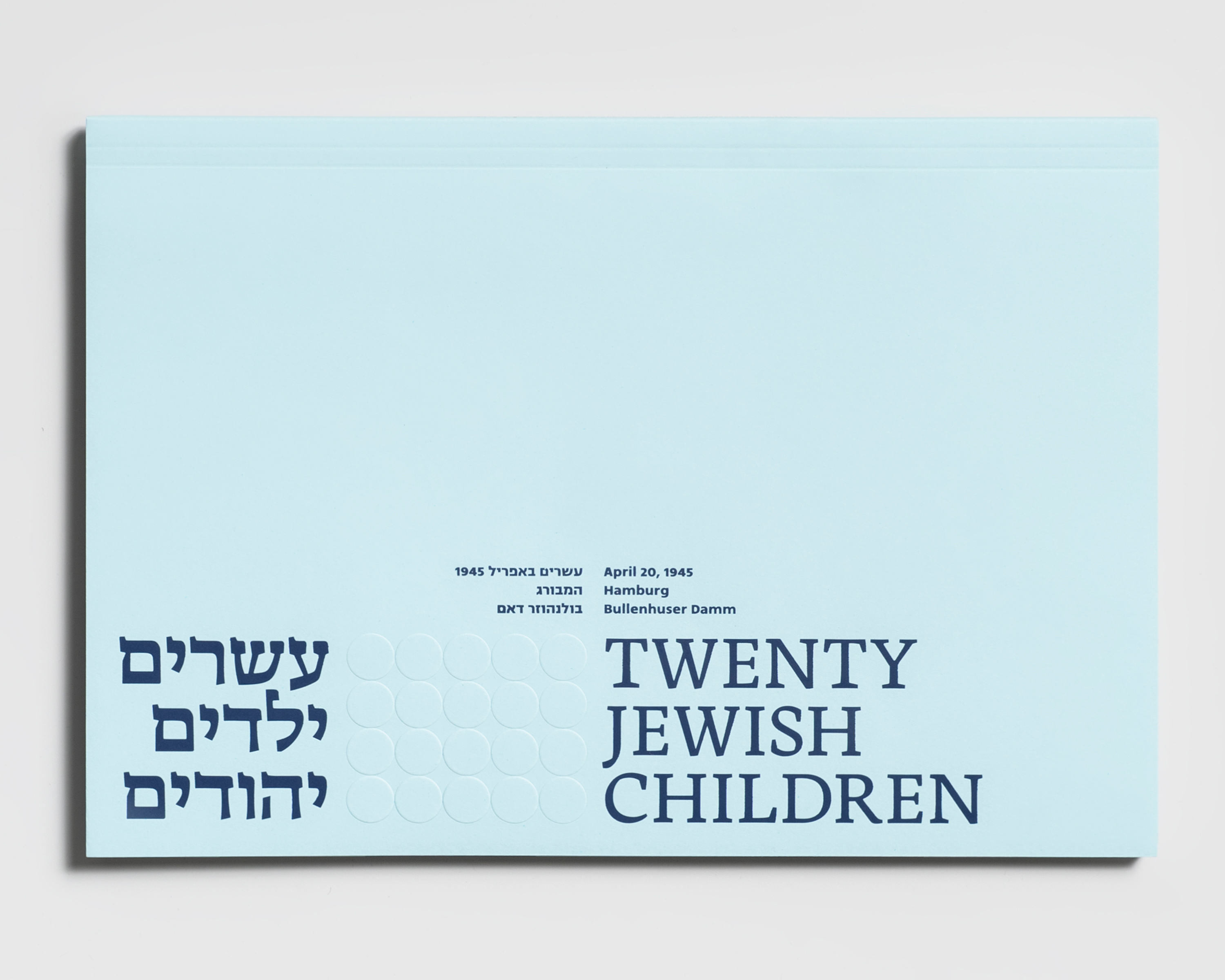


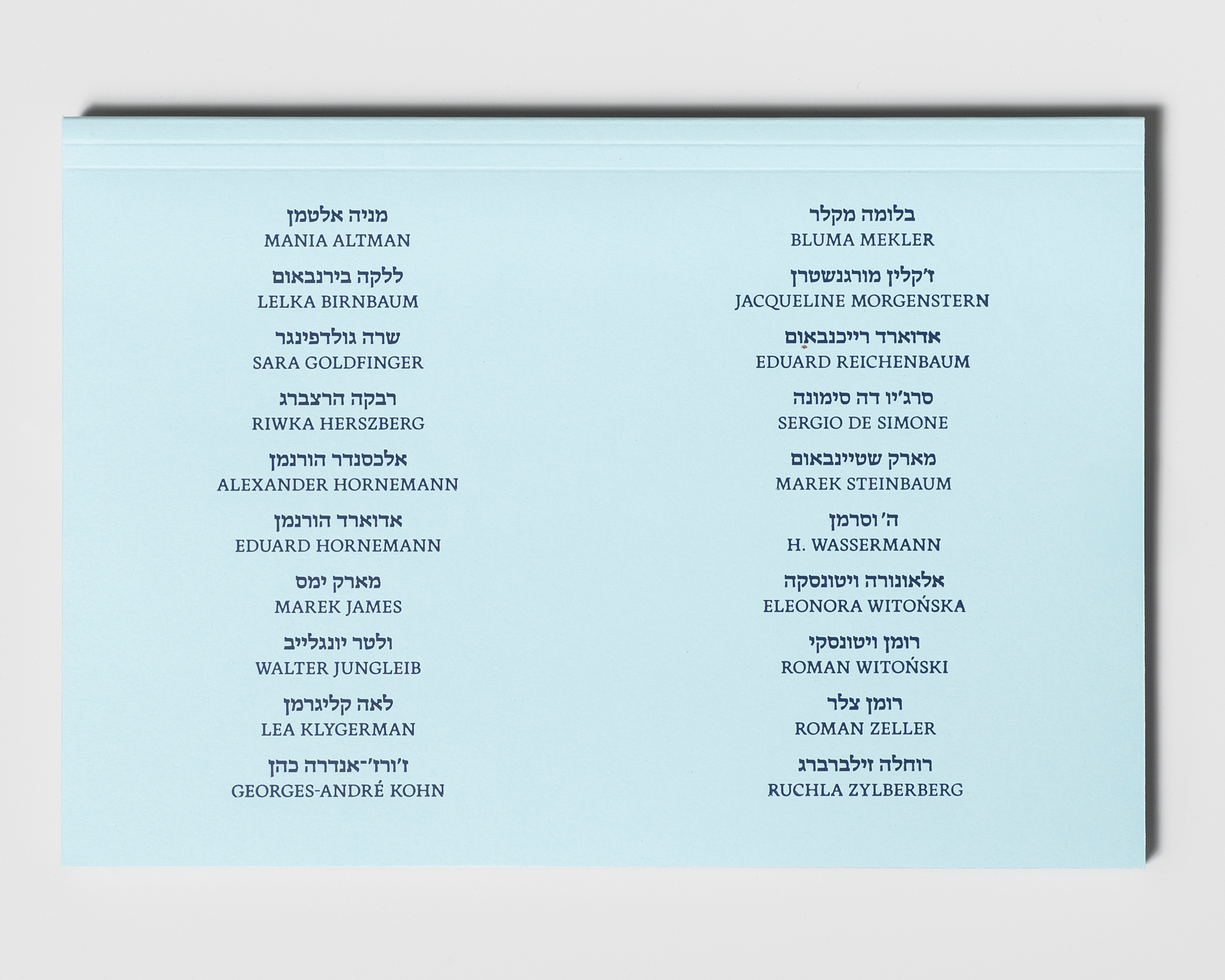
TWENTY JEWISH CHILDREN
A bilingual publication (Hebrew/English) created for the Bullenhuser Damm Memorial in Hamburg, commemorating twenty Jewish children and their caretakers who were brutally murdered in one of the most atrocious crimes of the Nazi regime.Commissioned Project, 2024
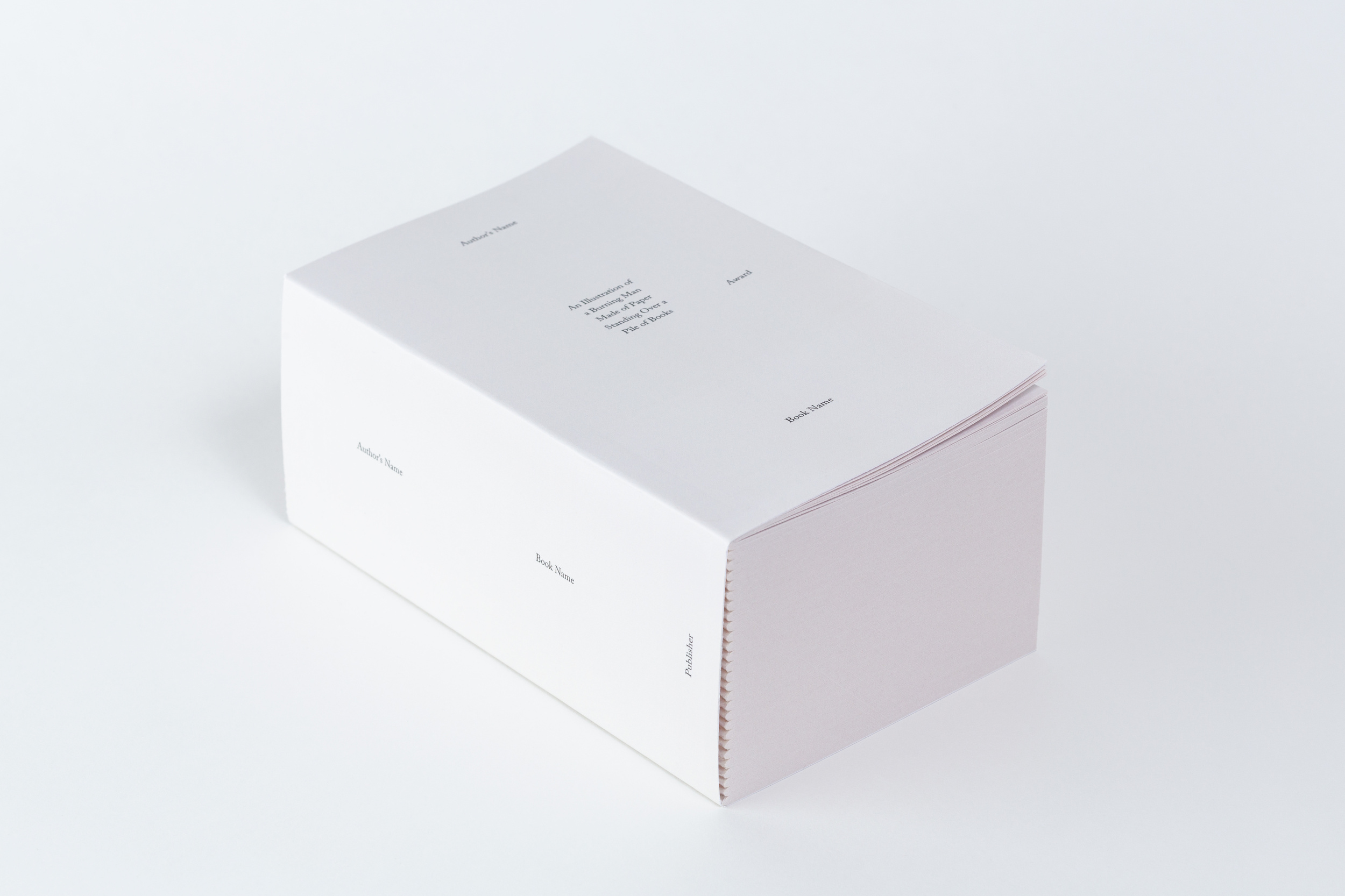

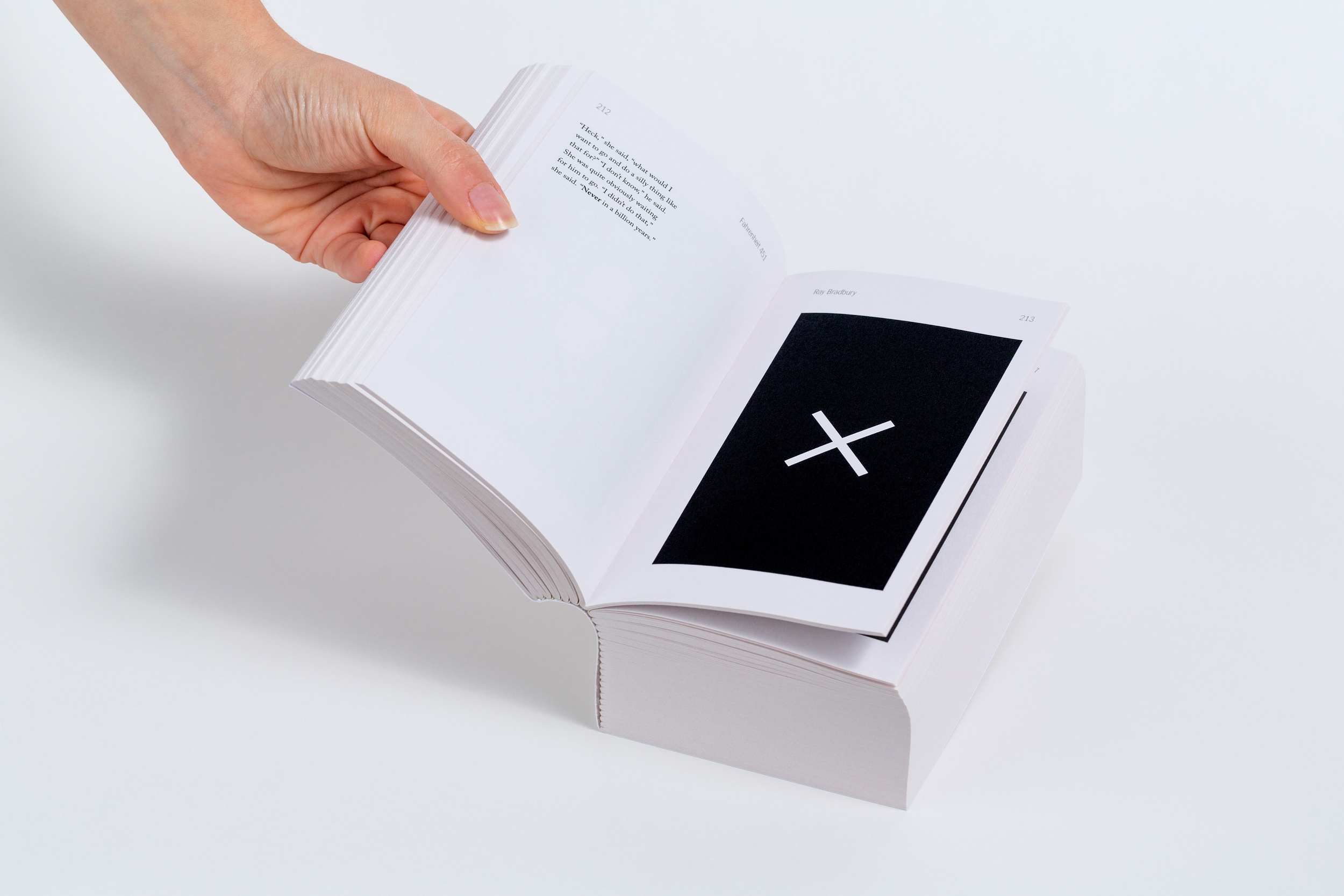

FAHRENHEIT 451
Fahrenheit 451 by Ray Bradbury is a dystopian novel that was first published in 1953. It presents a future American society where books are banned and "firemen" burn any that are found. The novel's protagonist, Guy Montag, is a fireman who begins to question his role in society and becomes drawn to books and the ideas they contain. As the story unfolds, he meets a group of rebels who are dedicated to preserving books and knowledge for future generations.
Redesigned as a 'Rote-Learning book', each scene is composed as a different memorization technique, such as acronyms, rhymes, gematria, hymns, lyrics, memory games, visual and graphic associations, written and spoken texts, and more. The project aimed to offer a unique way of experiencing the novel's content that inspires critical thinking.
Book Design Course, Shenkar, 2019 | Guidance: Noa Schwartz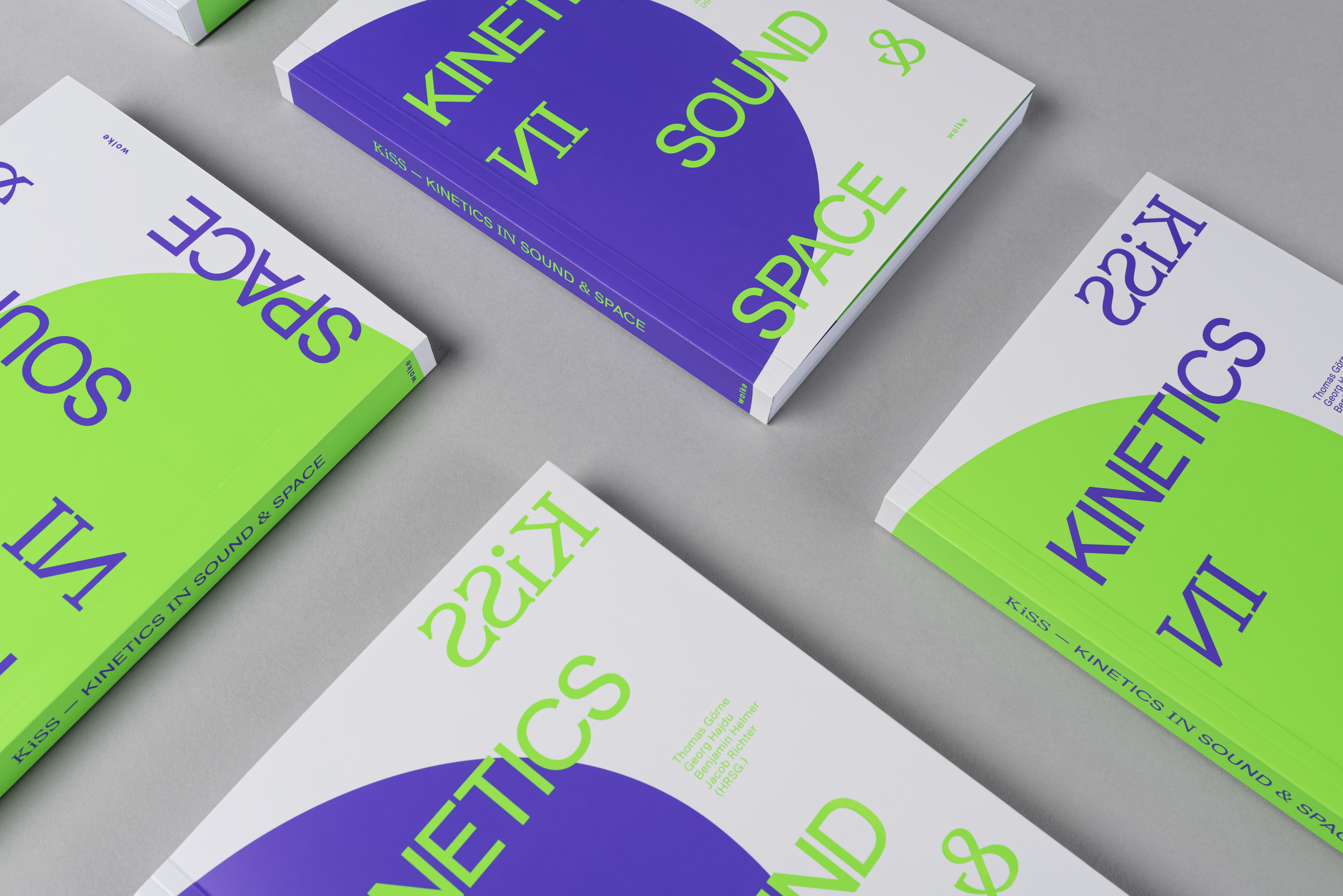

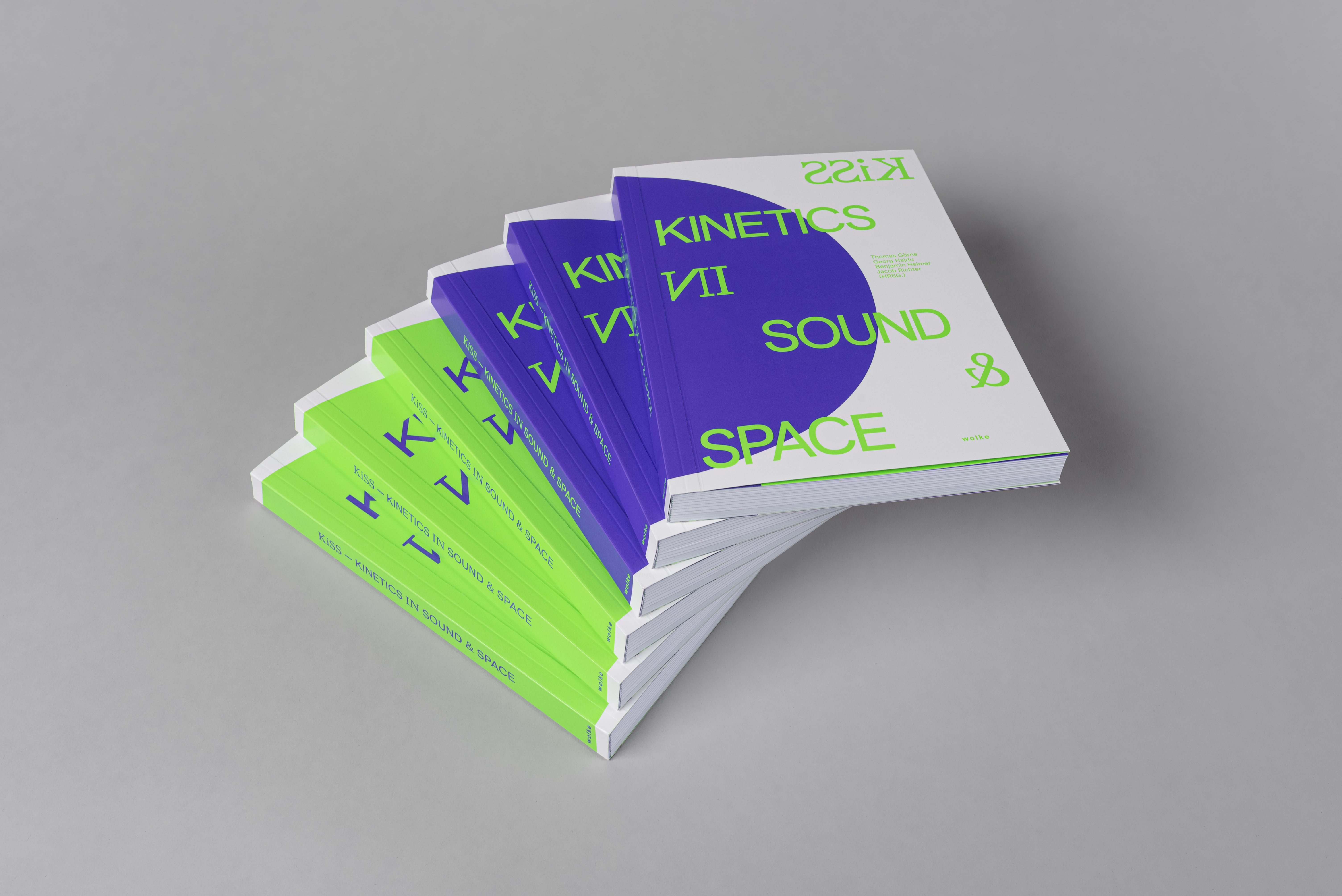

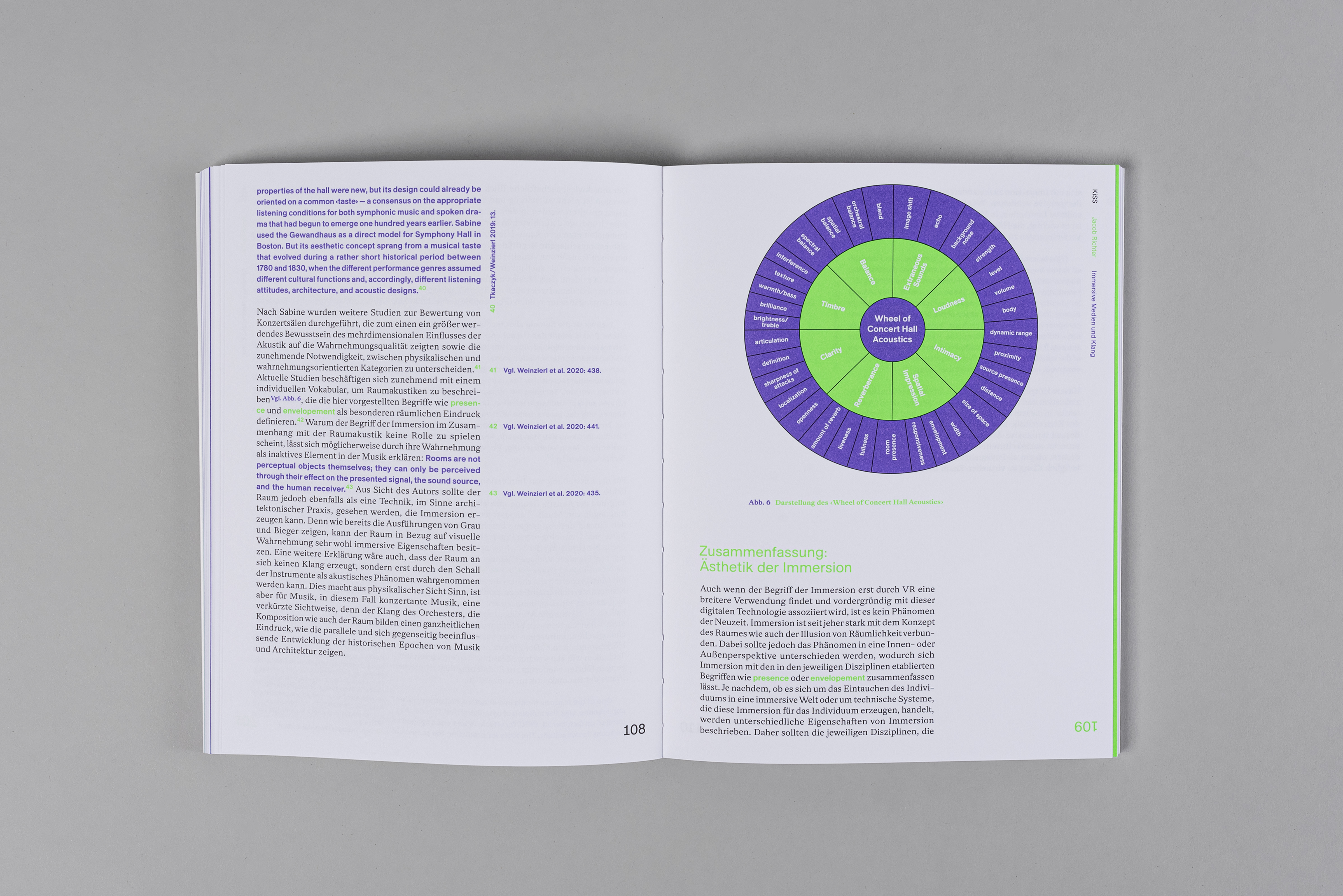
KiSS - KINETICS IN SOUND & SPACE
KiSS - Kinetics in Sound & Space: This acronym stands for the research group founded in 2019 by the partner universities HfMT Hamburg and HAW Hamburg under the direction of Prof. Dr. Georg Hajdu and Prof. Thomas Görne. As the name suggests, the focus of the research group was the examination of the dynamics of spatial sounds and sound spaces.
To enhance the dynamic nature of the research presented in the book, we developed a design concept centered around the concepts of contrast and movement. We recognized that presenting such a dynamic topic in a static medium would create an inherent contrast, and we wanted to emphasize this contrast through our design. The cover features two contrasting designs with switching colors, while the entire book uses only two contrasting Pantone colors (neon green and purple) and black, including all images and graphics. Our design approach not only reflects the research content of the book but also represents our own artistic research on spatial sound and sound space.
Featured in Fonts in UseFeatured in Selection.Blog
Designed in collaboration with Leoni Roosen & Claudia Schulz, HAW Hamburg, Master Program 2022 | Guidance: Heike Grebin & Lea Sievertsen
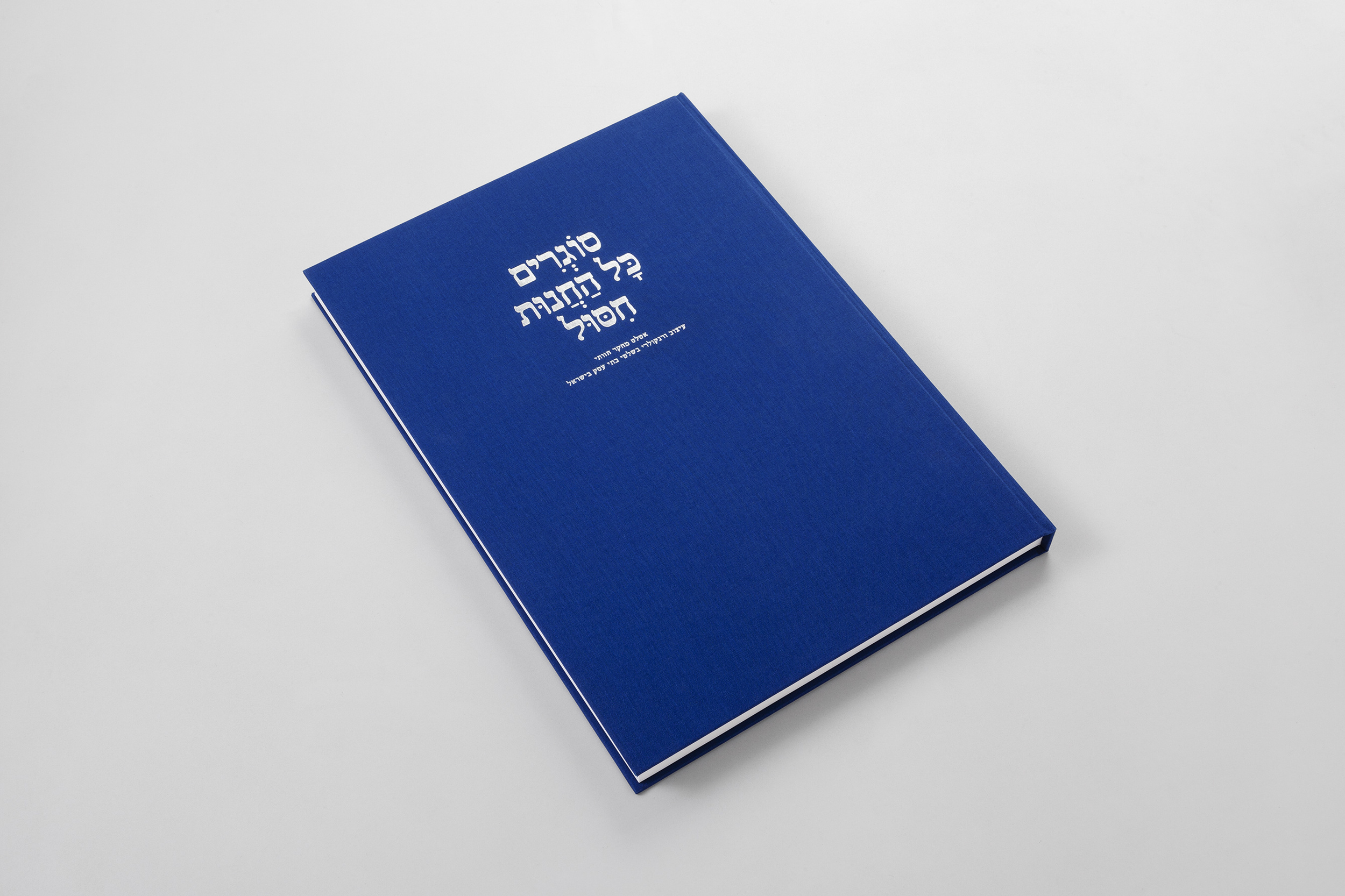
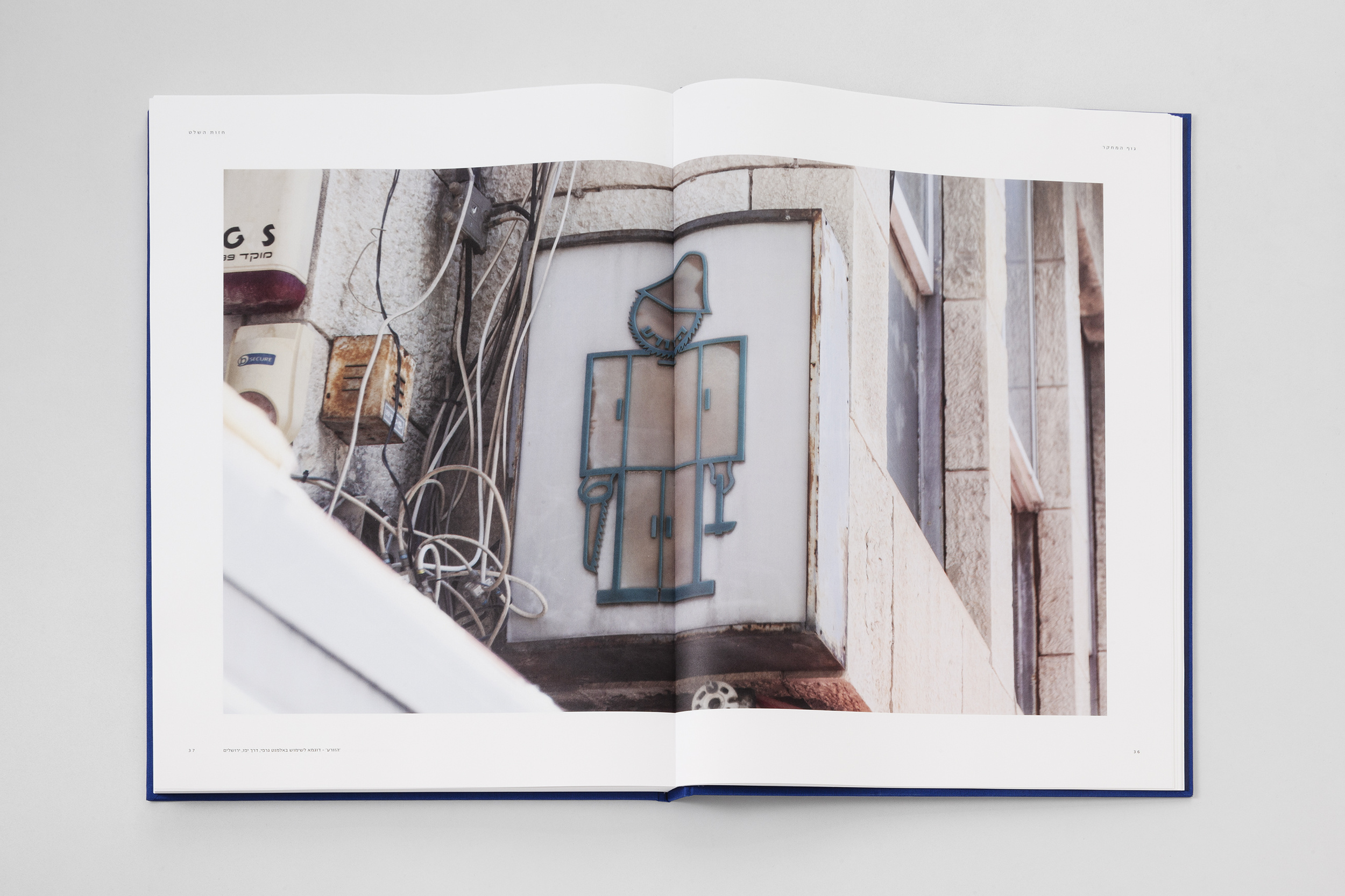
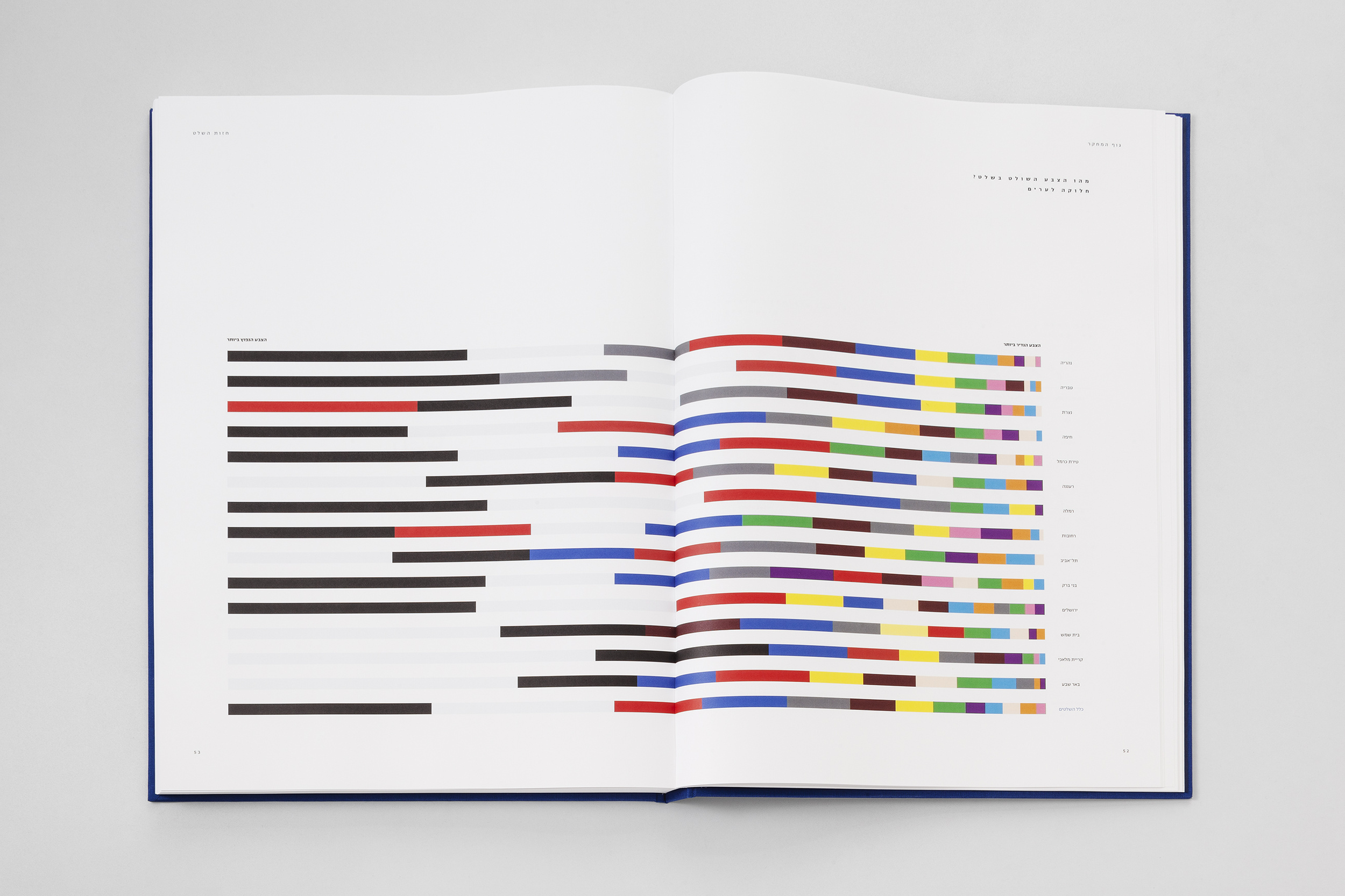
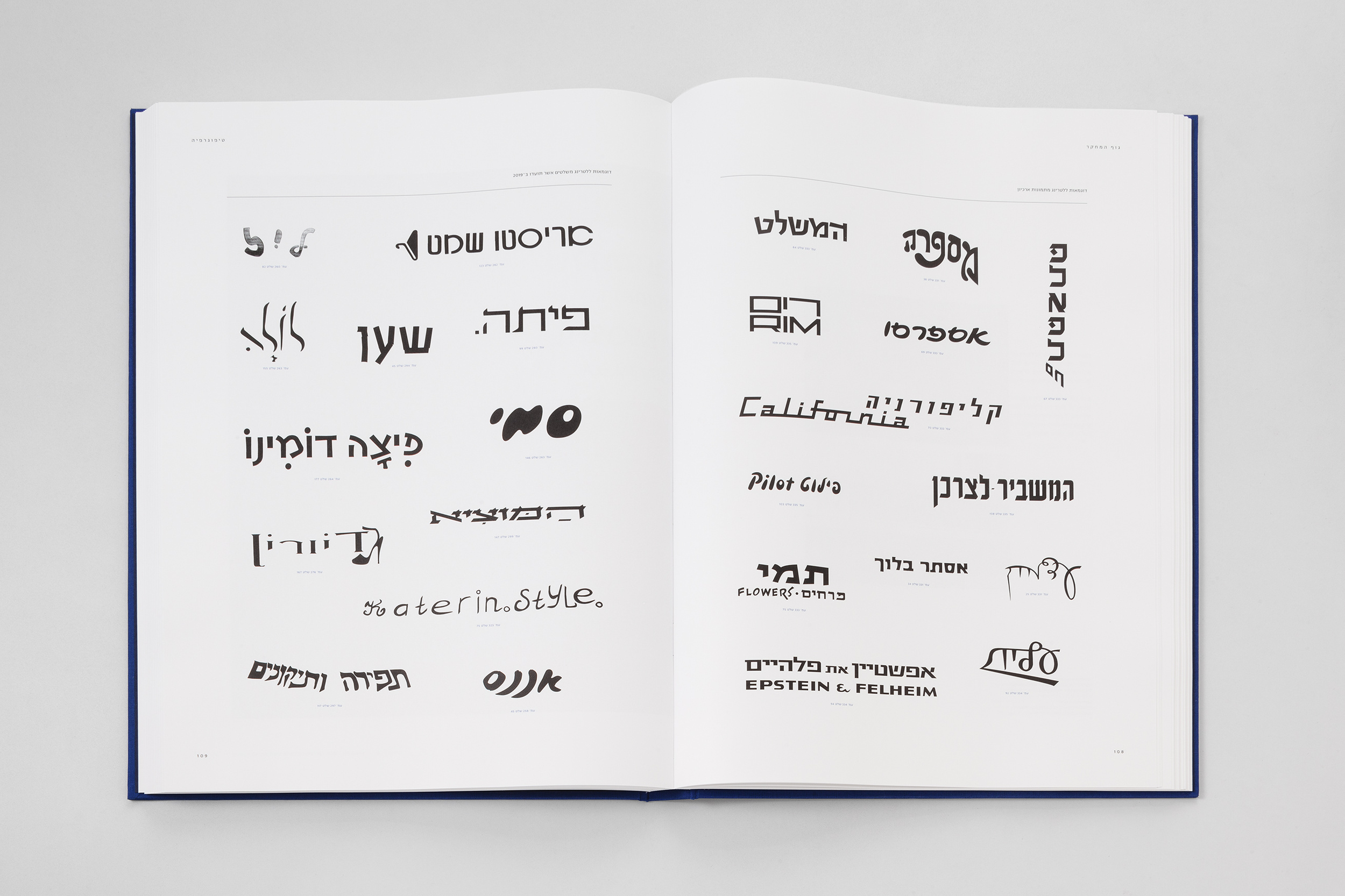
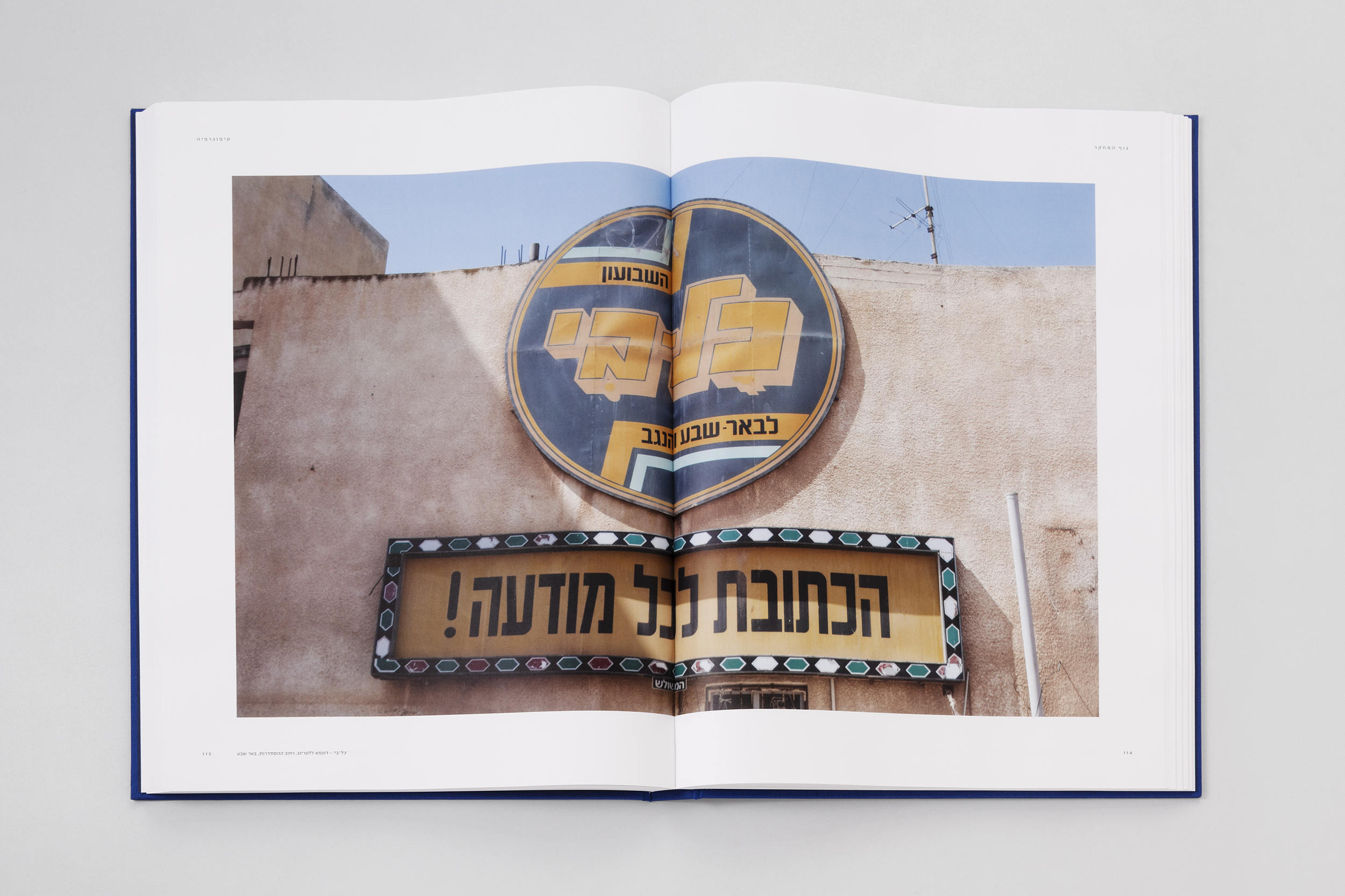
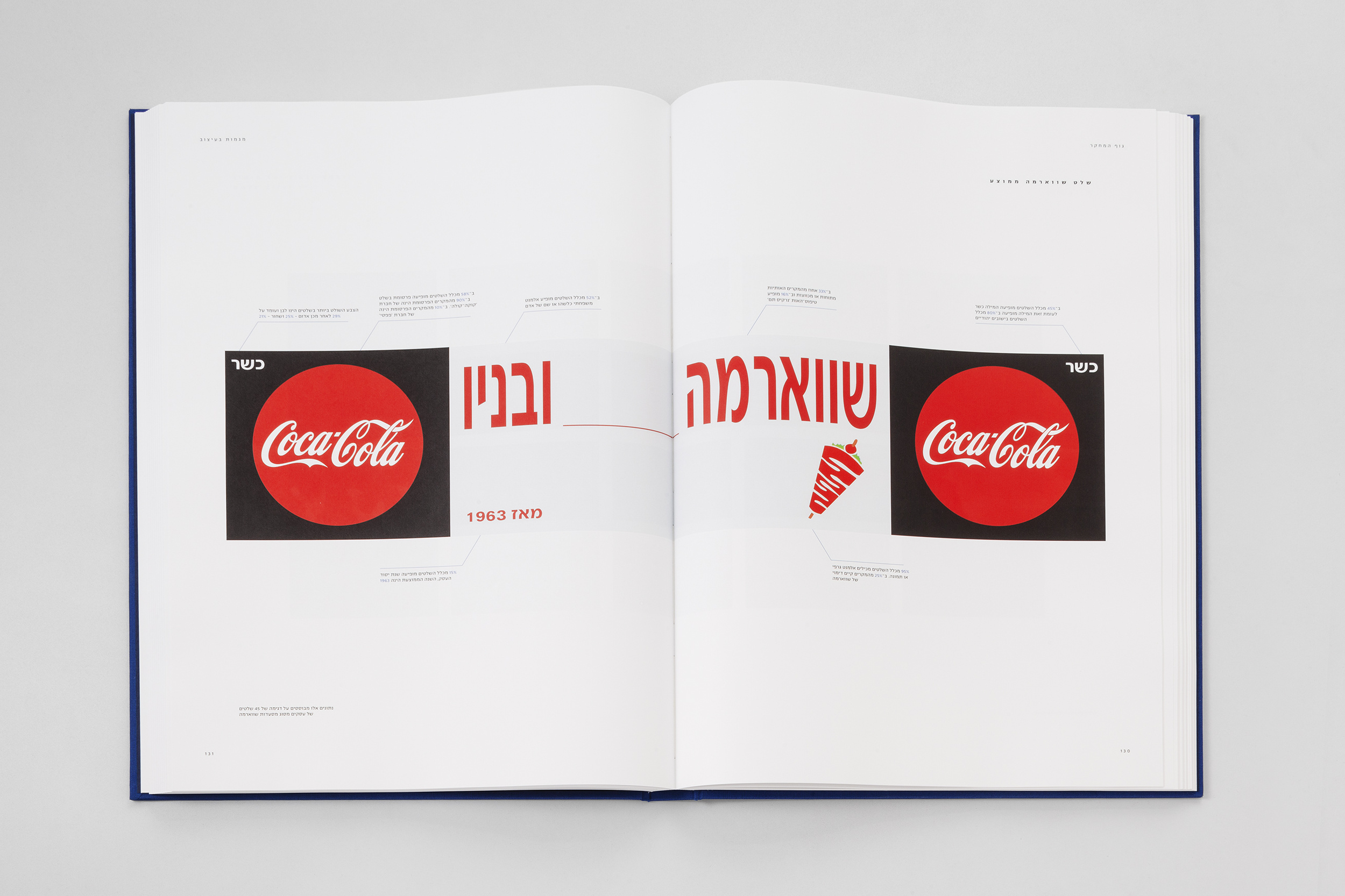
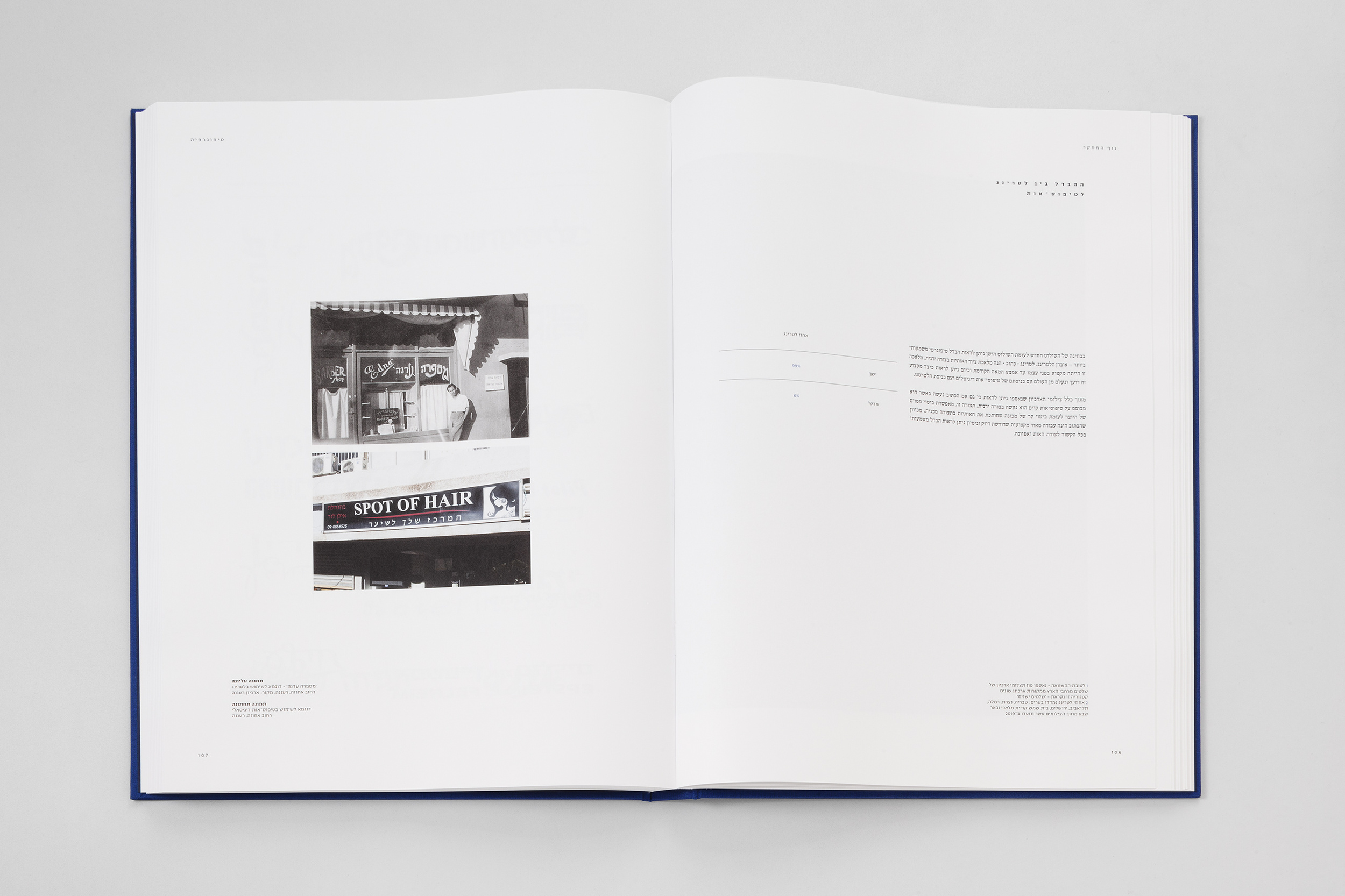
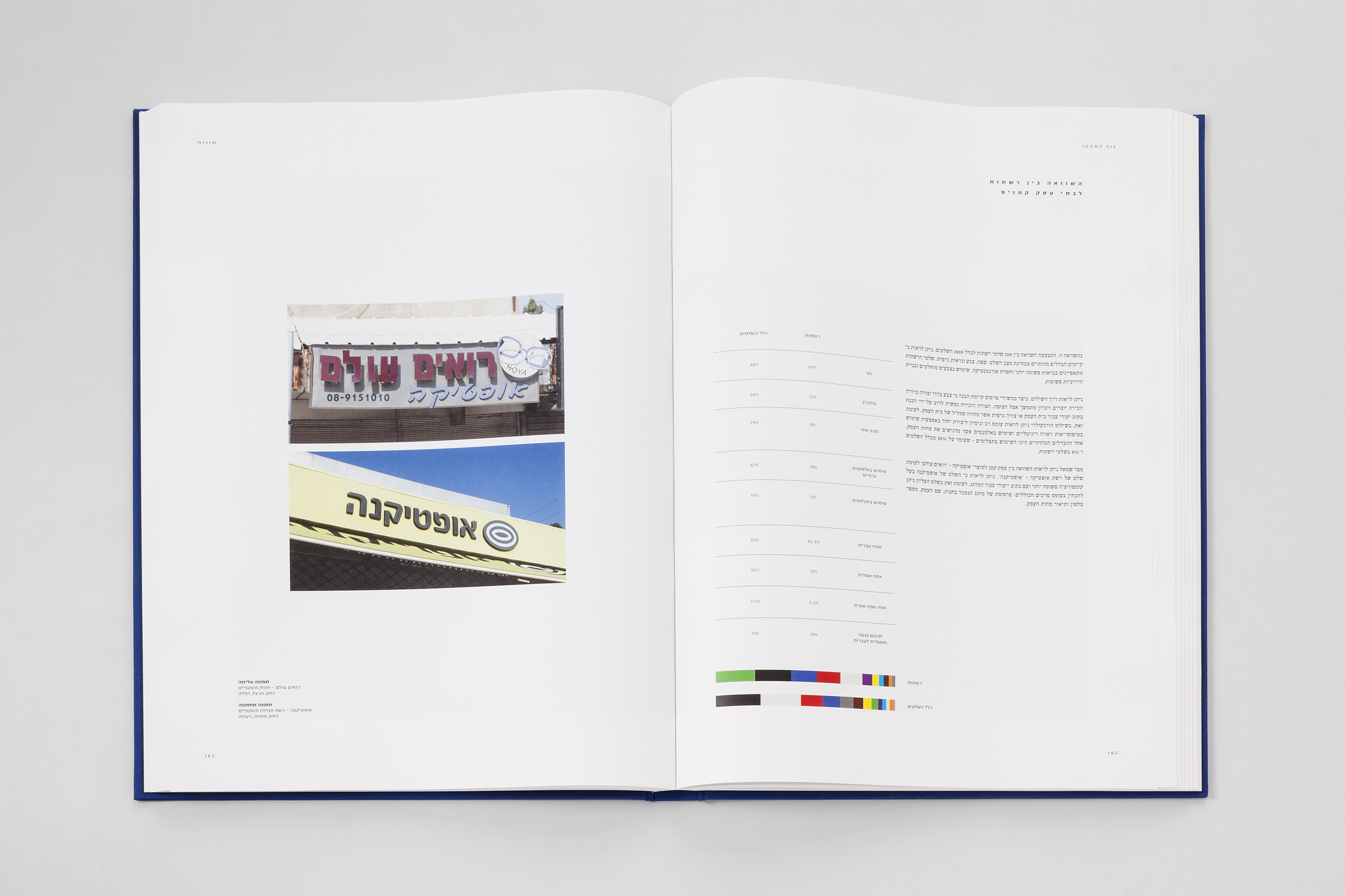
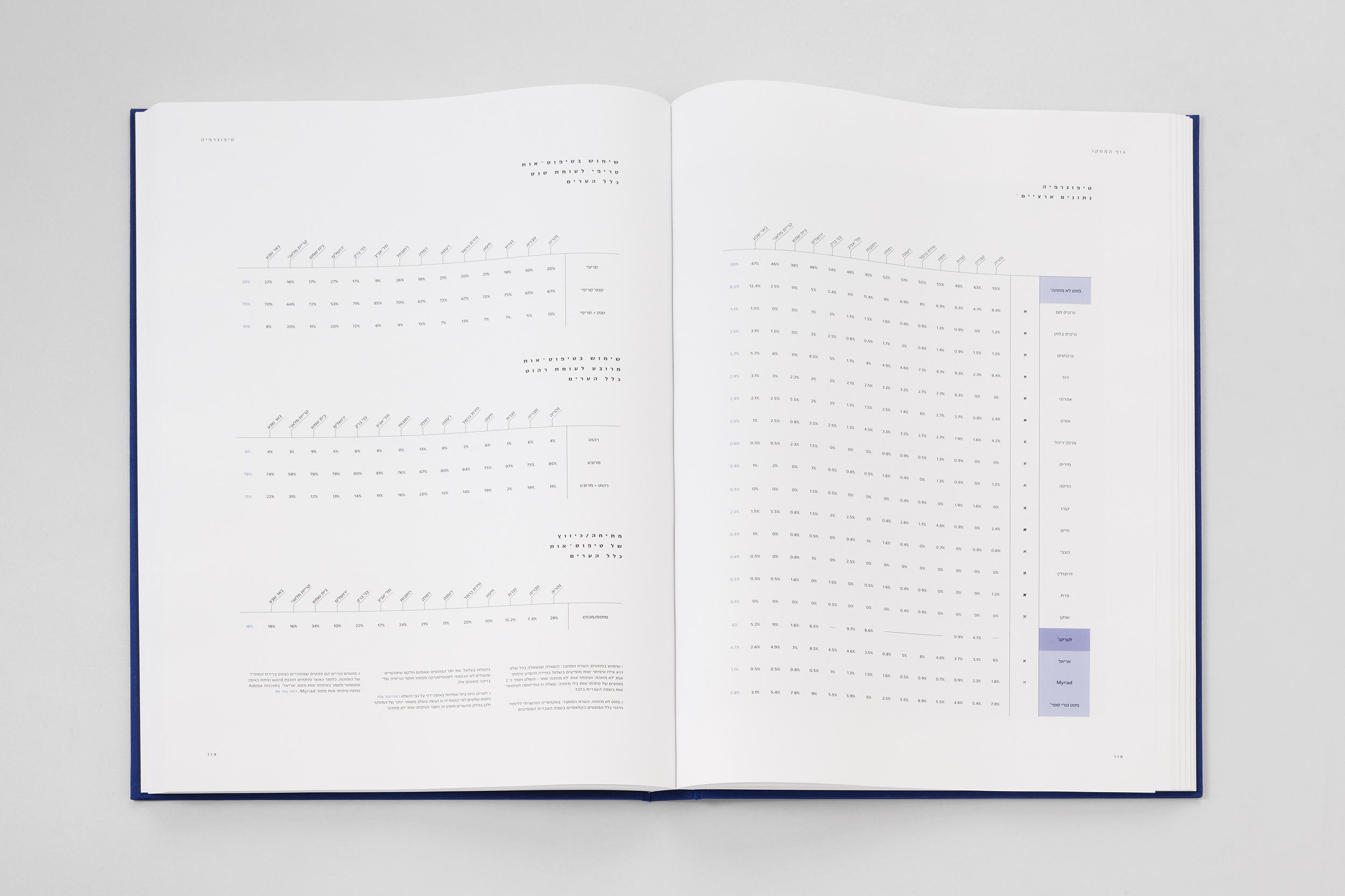
STORE IS CLOSING EVERYTHING
MUST GO
Visual research atlas of vernacular design found in store signage at main roads within Israel. The book contains documentation and research of more than 2,019 signs that were documented in 14 different cities throughout the country.I have always been drawn to the chaos that is present in the world, especially the ebb and flow within the street, of not just people but the immersed design of advertising. Through the encounter with the shop sign I found a way to decode such disorder, that demonstrates an antithesis through a connected system of rules, patterns and order that are insidious within the environment.
The book contains an array of comparisons and contrasts the signage of the past via archives, an intrigue in the differences between small and large businesses, and the aesthetic visualization of trends and patterns that seem to be apparent (or not). All of which fall under a socio-economic status, defined by local demographics.
Featured in Portfolio MagazineFeatured in La-Culture Magazine
Graduation Project, Shenkar, 2019
Guidance: Nadav Barkan and Merav Shacham
Self-publishing, edition of 4 copies, Munken Lynx, 120 GSM, Digital printing on HP Indigo 10000 Digital Press. Presented in the annual graduate Exhibition, July 2019
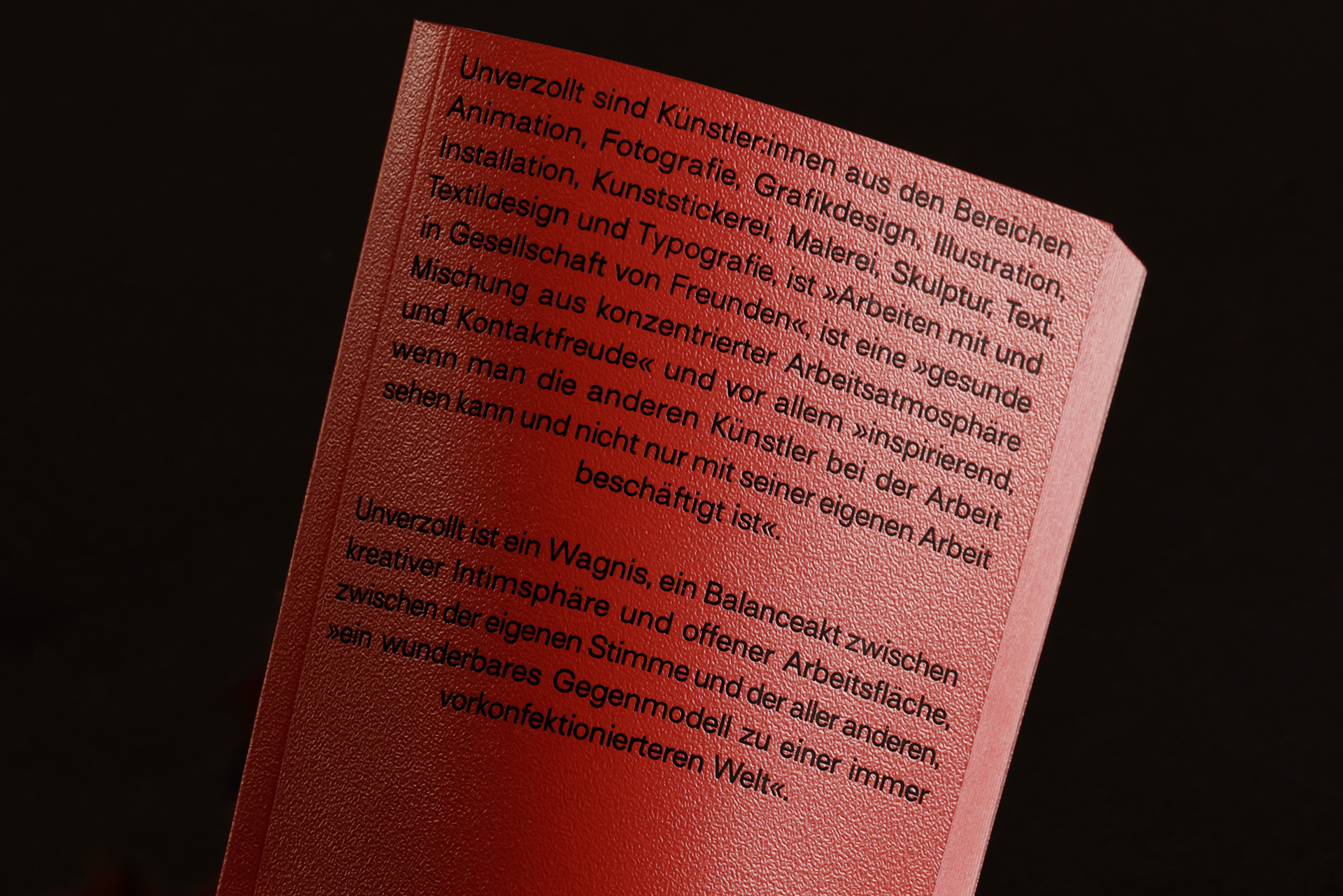
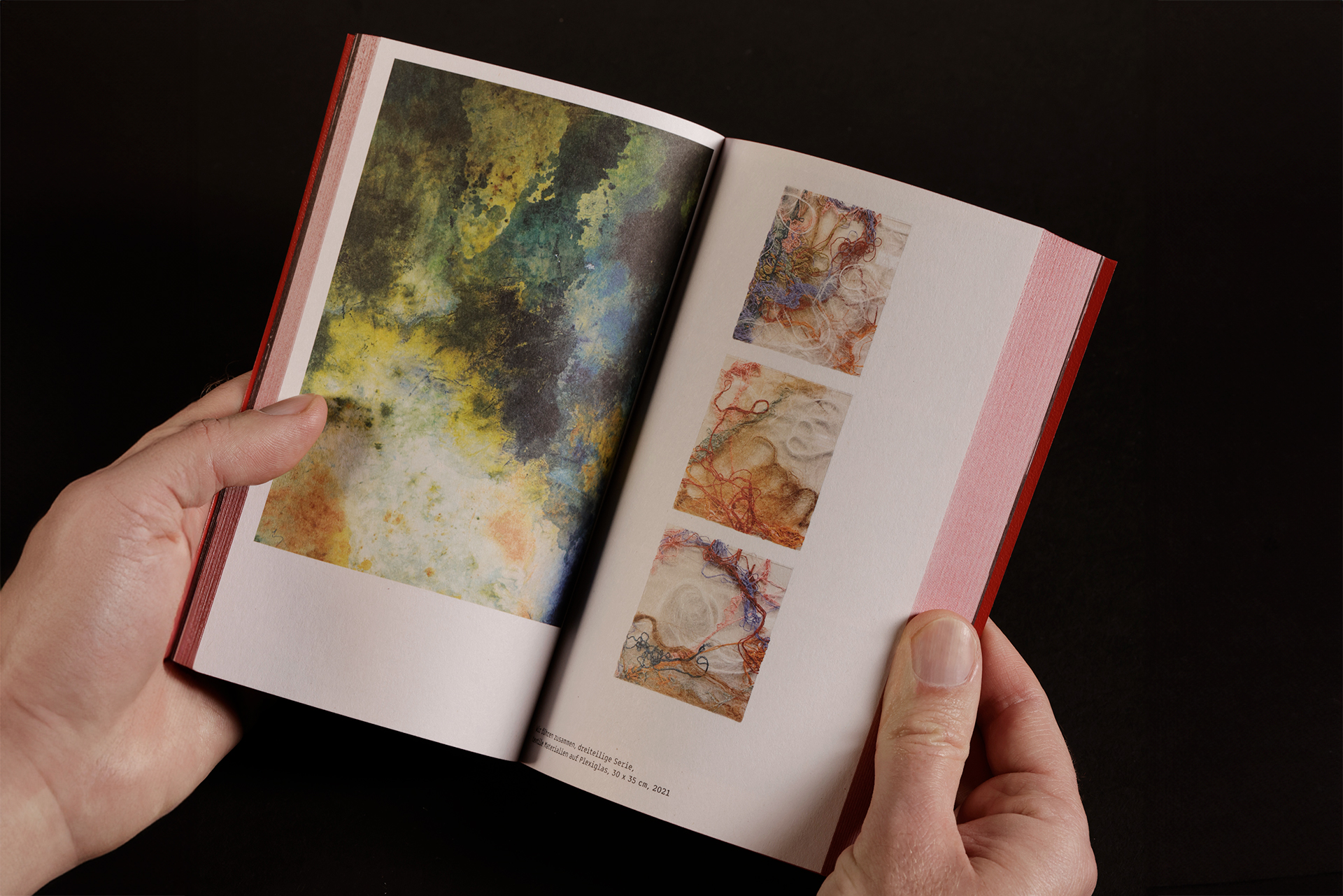



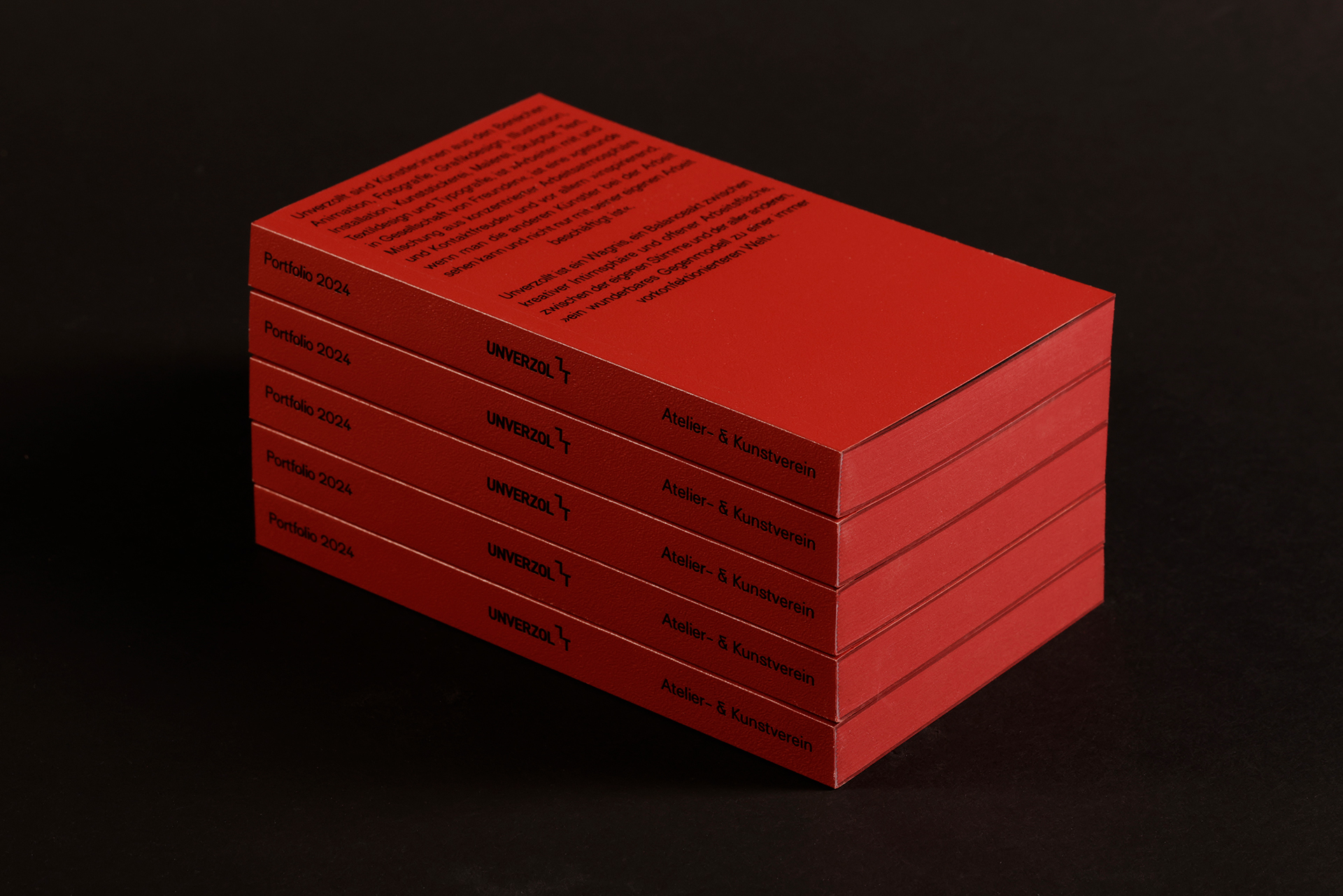
UNVERZOLLT CATALOG
Catalog design for Unverzollt art collective, located in the Speicherstadt in Hamburg, Germany. The design is inspired by the brick stones that characterize the area surrounding the studio. The catalog showcases 26 artists from various mediums, including animation, design, illustration, painting, performance, photography, sculpture, textile, and text.Commissioned Project, 2024
Text: Lucia von Heusinger
End-Papers photos: Thomas Schmidt
Offset Printing, 80 g/m2 Holmen TRND 2.0, 250 g/m2 Grenita
Printing: Gutenberg Buys Feindruckerei GmbH
TDC Tokyo Annual Awards 2025 “Excellent Work“ - Editorial/Book Design Category
![1 / 4]()
![2 / 4]()
![3 / 4]()
![4 / 4]()
HEAD IN THE STARS
Short article design about space
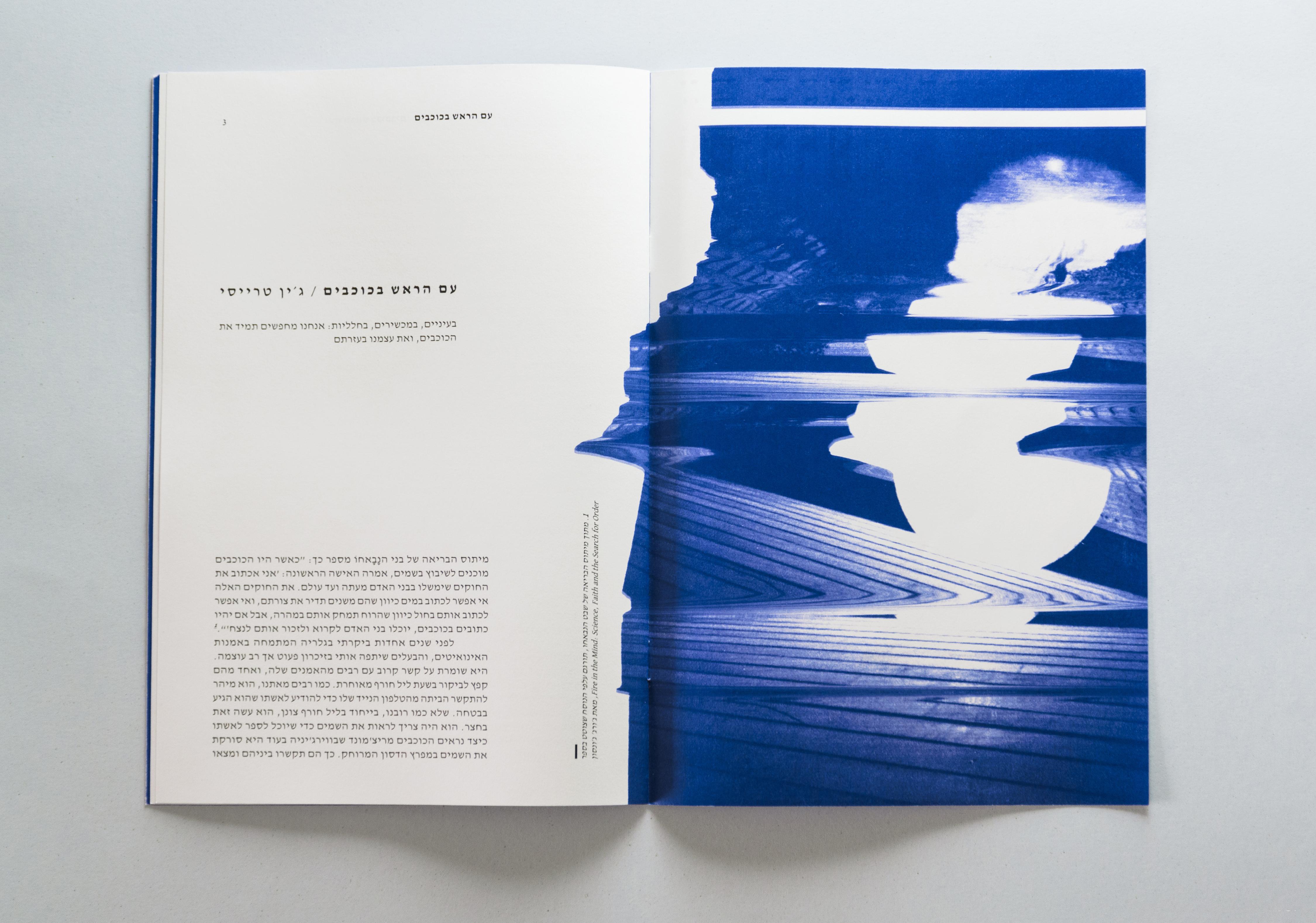
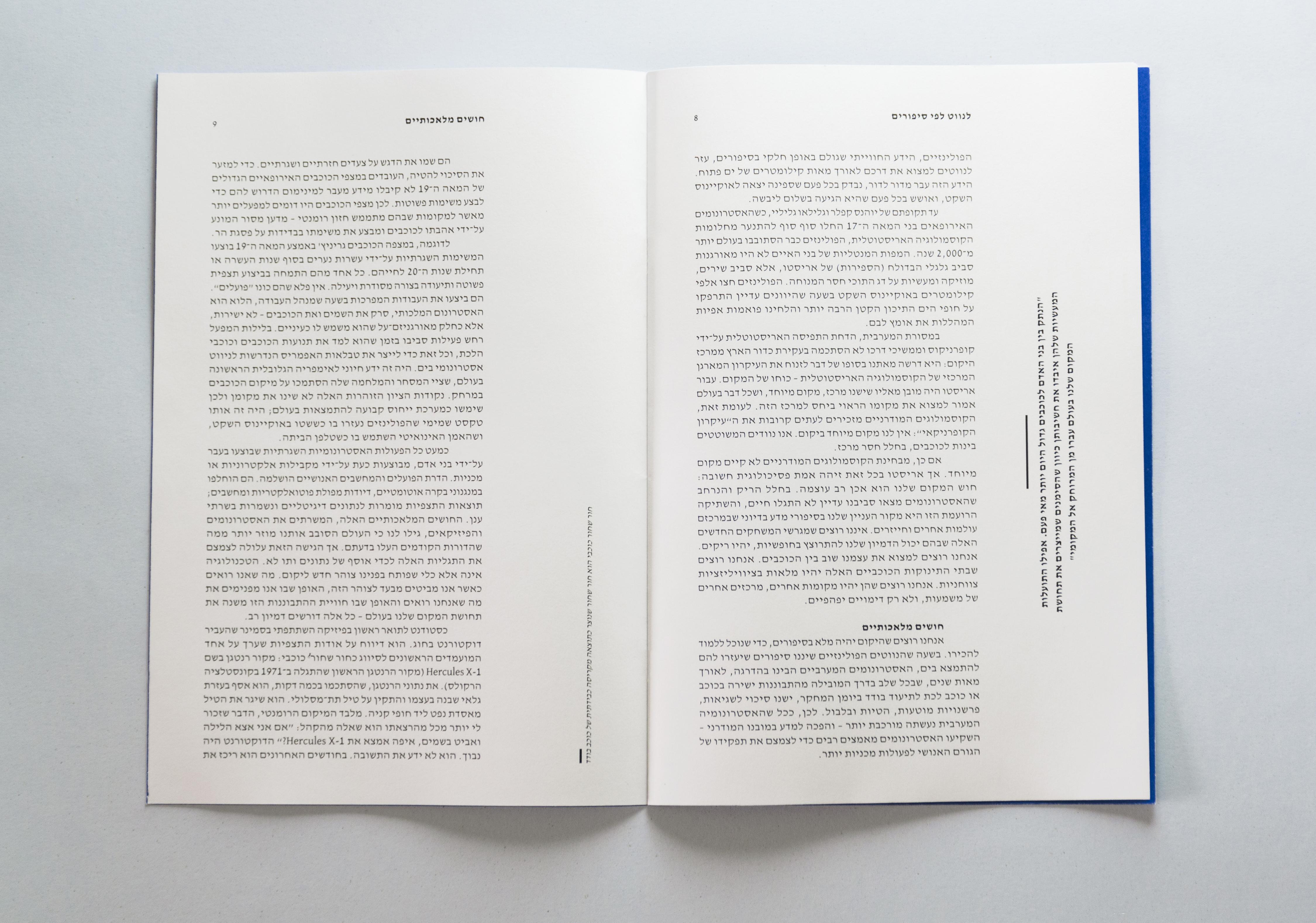

Original Photographs by: Hideo Kobayashi
Typography Course, Shenkar, 2017 | Guidance: Michal Pauzner


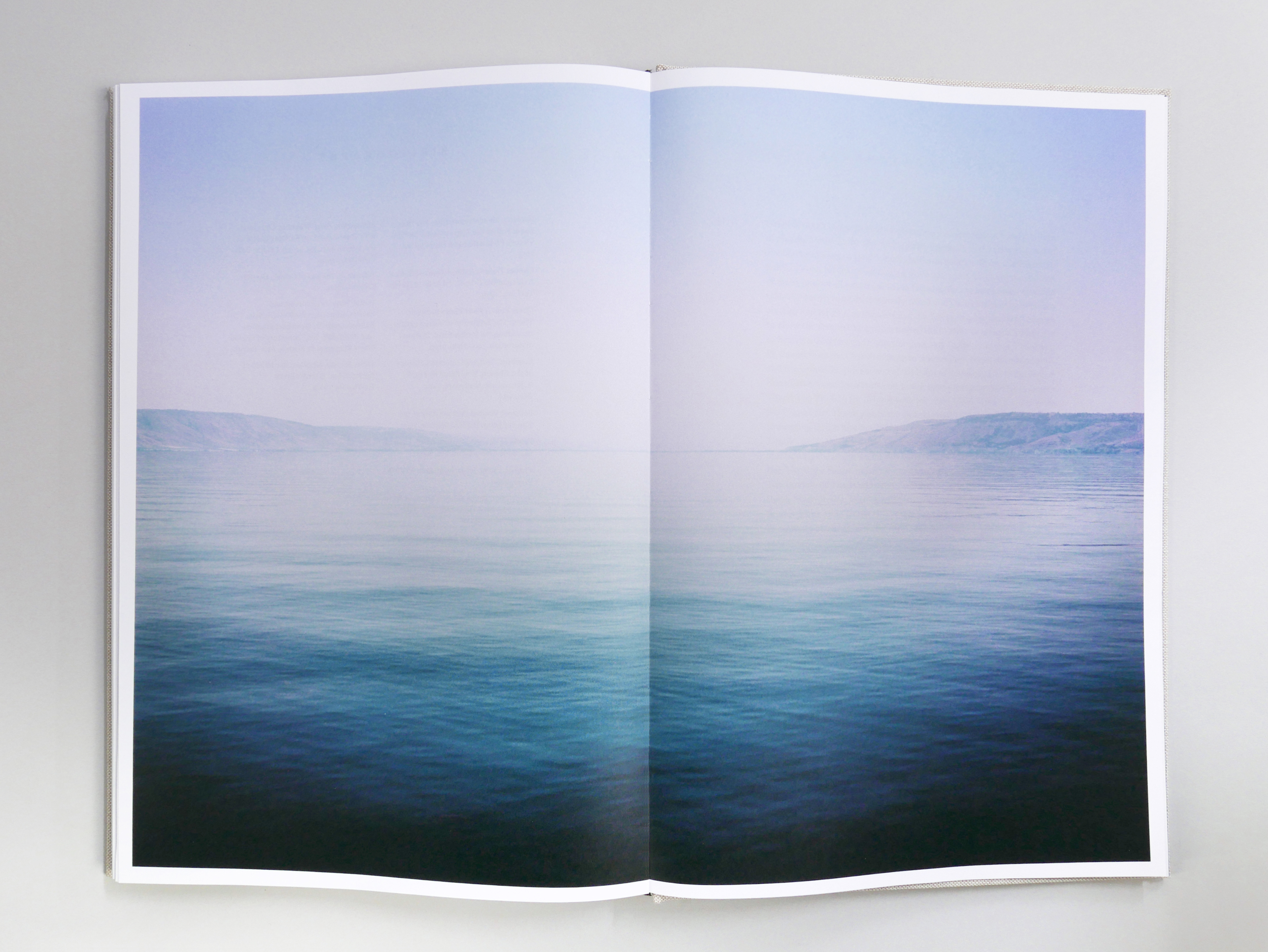
THE ROAD BEGINS IN CAPERNAUM
Photobook for the photographer and actor Shahar Isaac, documenting the filming of the series "The Chosen," Seasons 1 & 2, and the original locations in Israel that inspired the series. All photos were shot on an analog camera by the photographer during the series.
The design was inspired by memorabilia, with the format of the book and the images derived from old postcards. This approach enhances the contrast between ancient times, the present, reality, and staged scenery.
Commissioned Project, 2024Design & Art Direction: Liad Shadmi
Map Illustration: Itai Raveh
Proofreading: Rotem Alter, Philippa Watts
Printing: Robstolk, Amsterdam

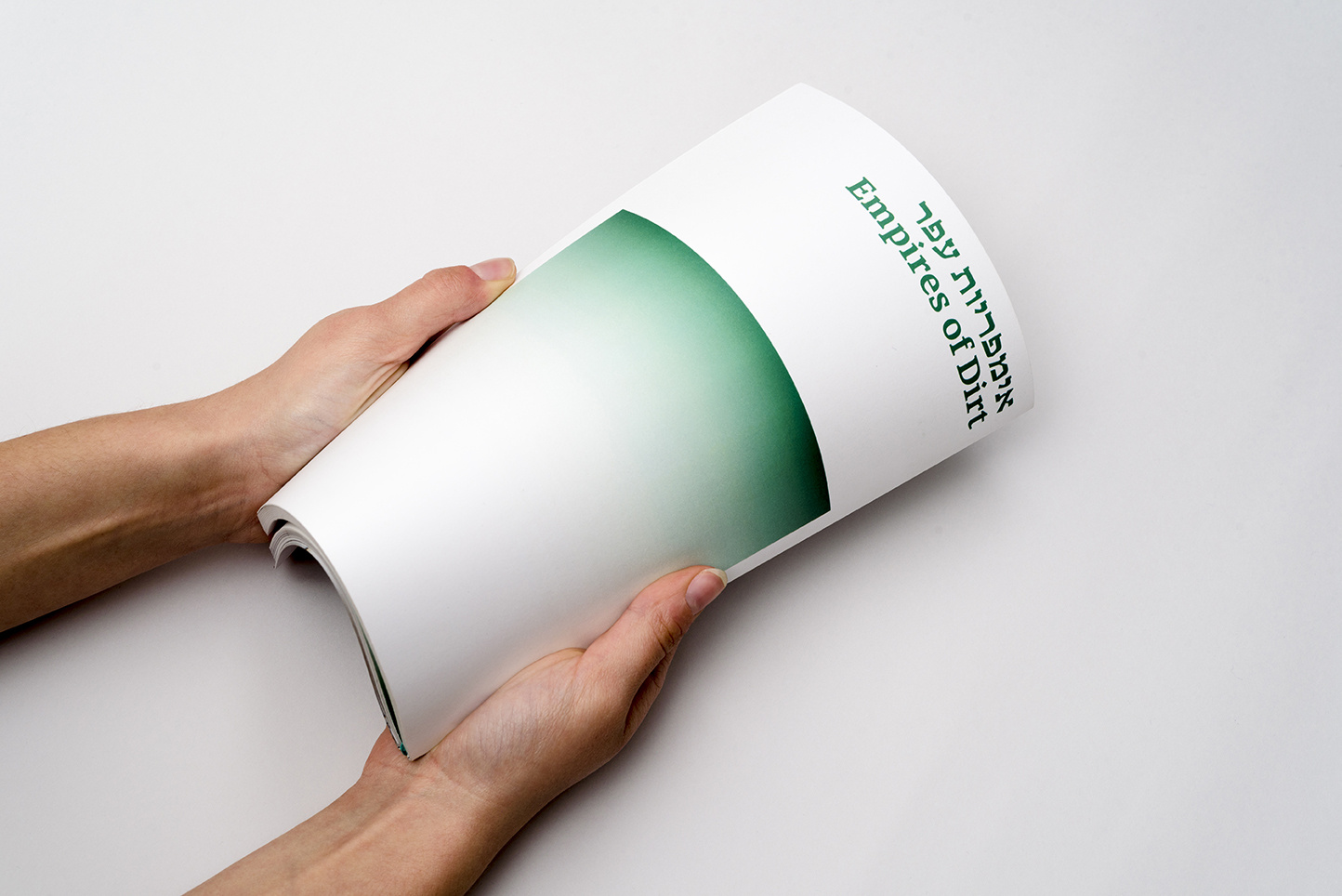
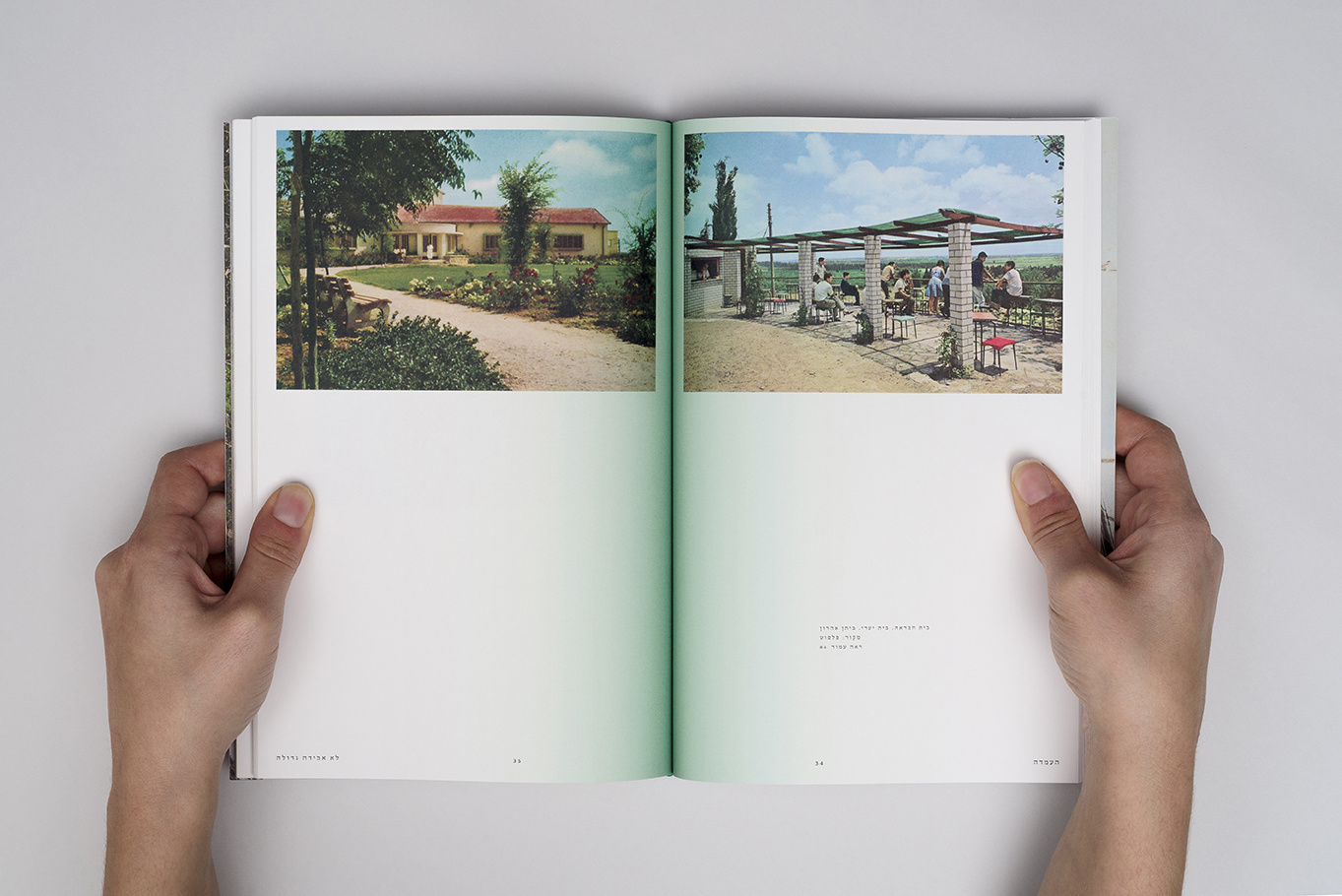
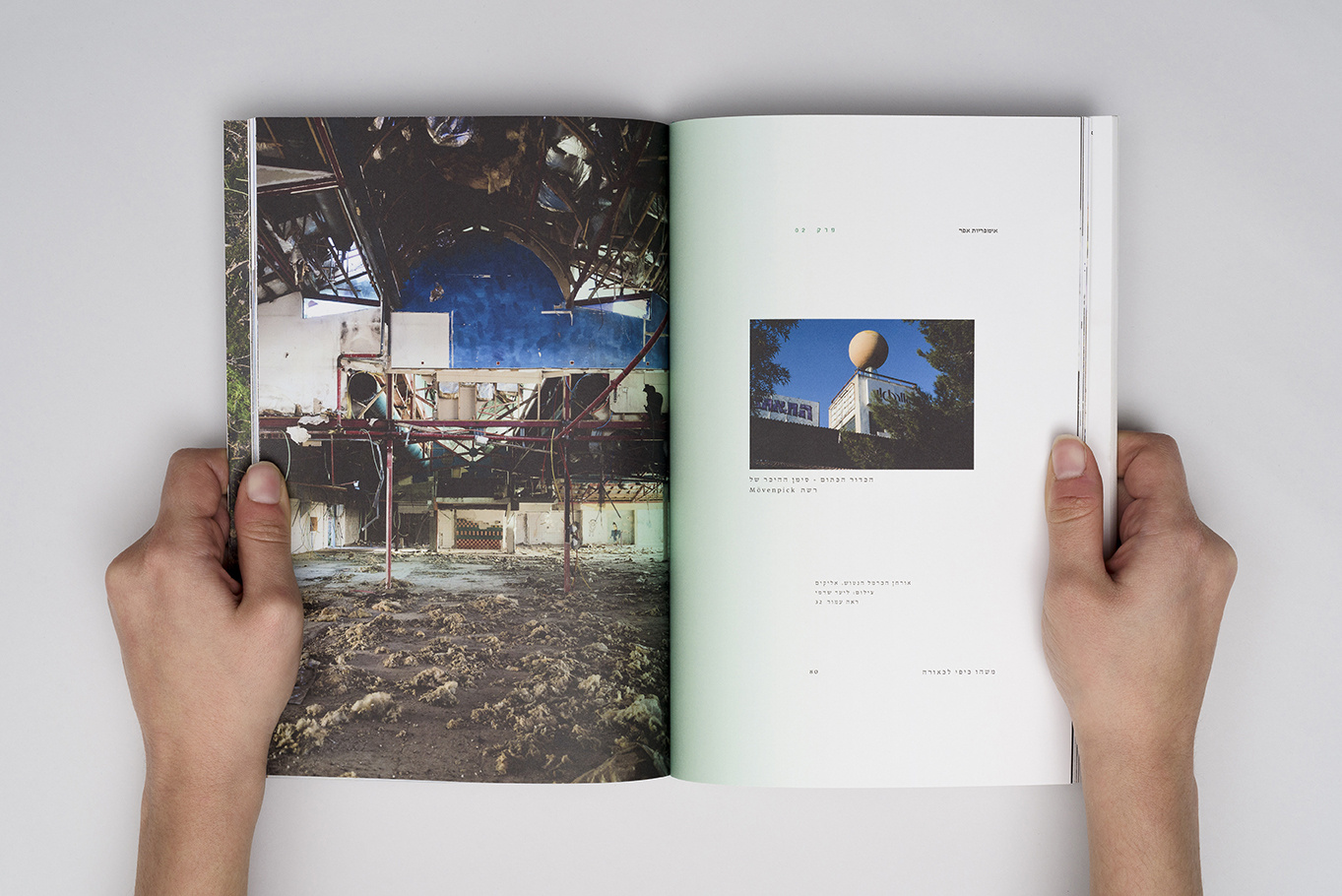
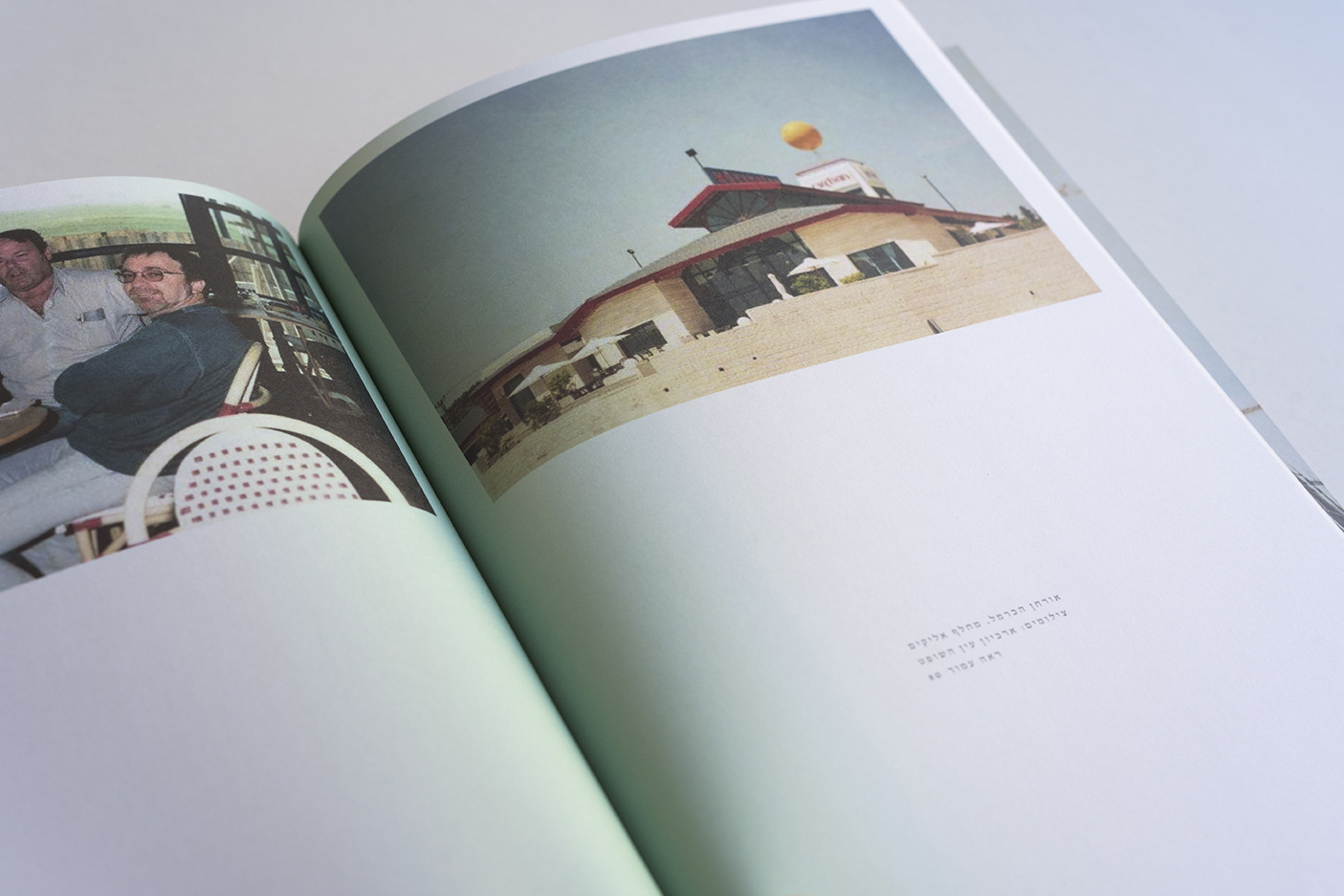
EMPIRES OF DIRT
A publication about abandoned architecture and the transience of our existence. The publication examines empty places that used to serve for leisure. Most of them were built by famous architects and built to grandiose dimensions.Typography Course, Shenkar, 2018 | Guidance: Tamar Bar Dayan
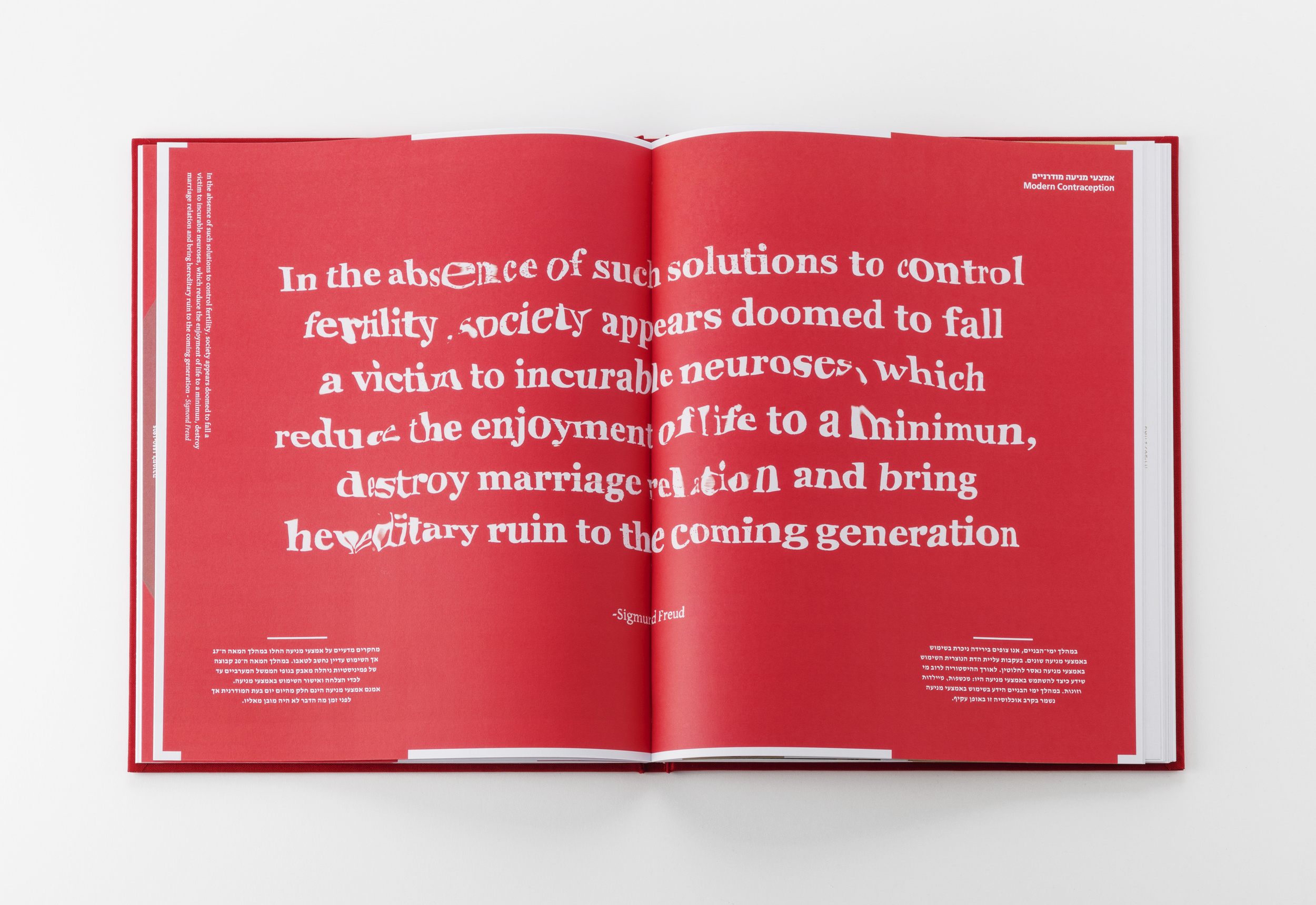
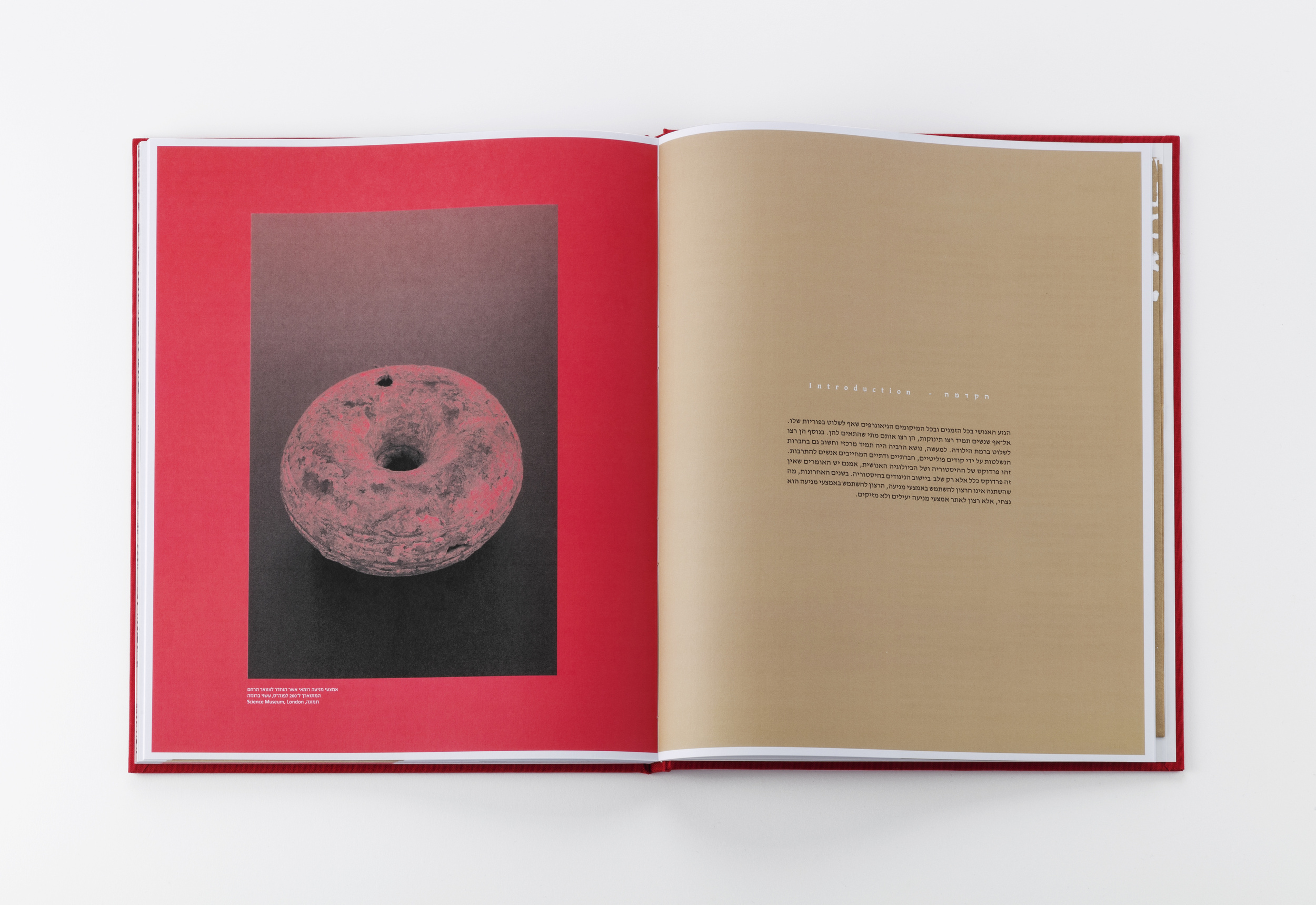
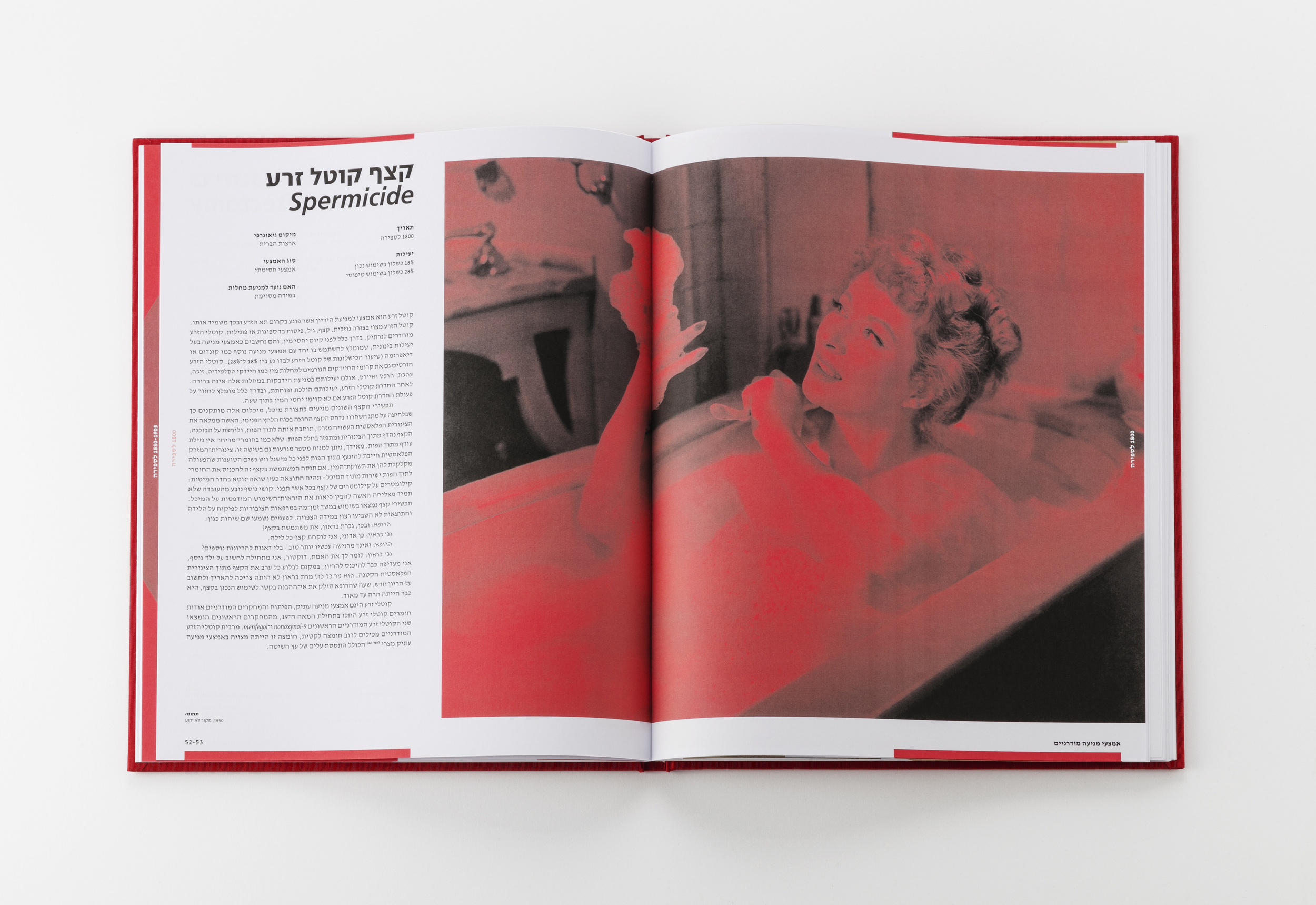
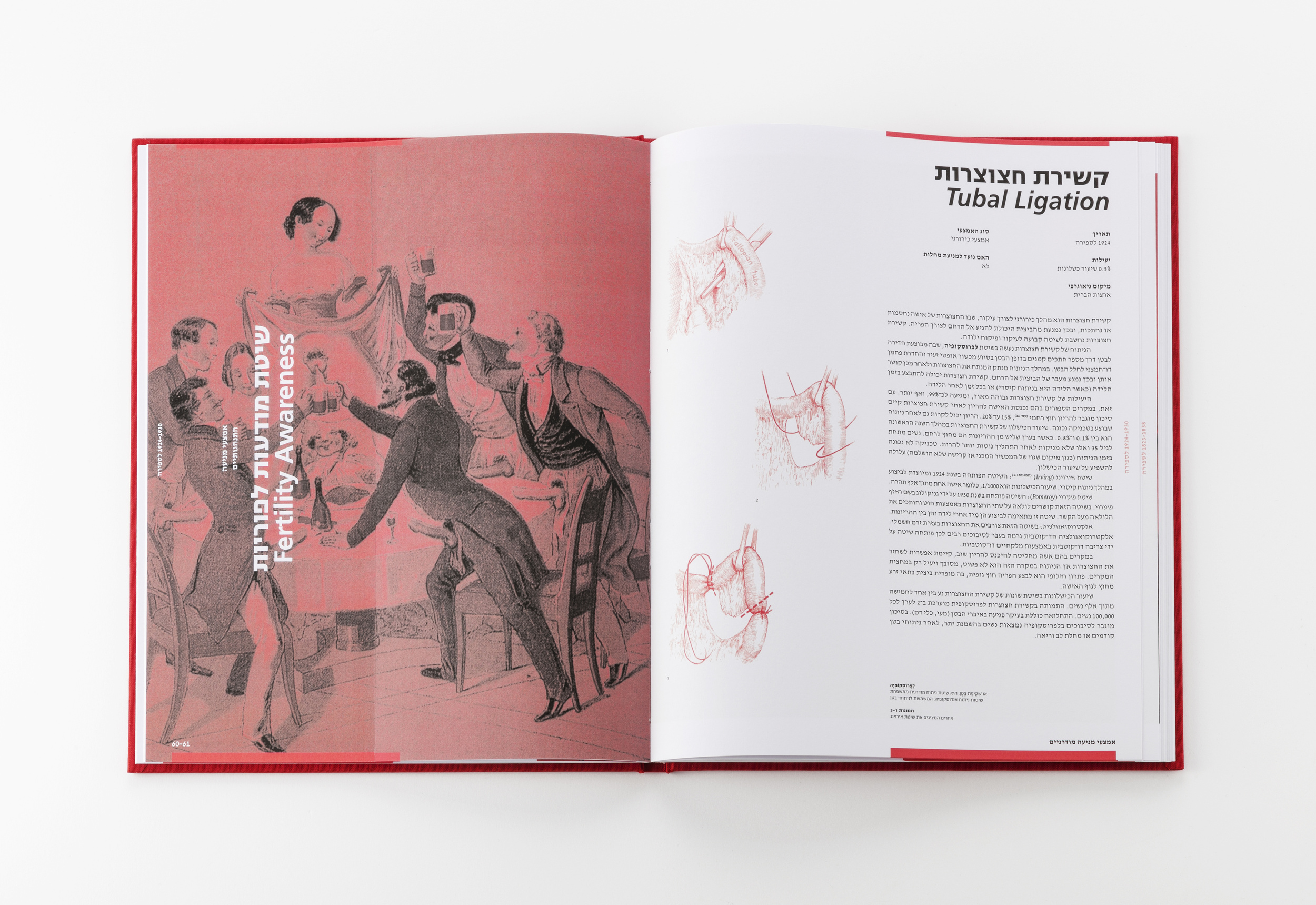
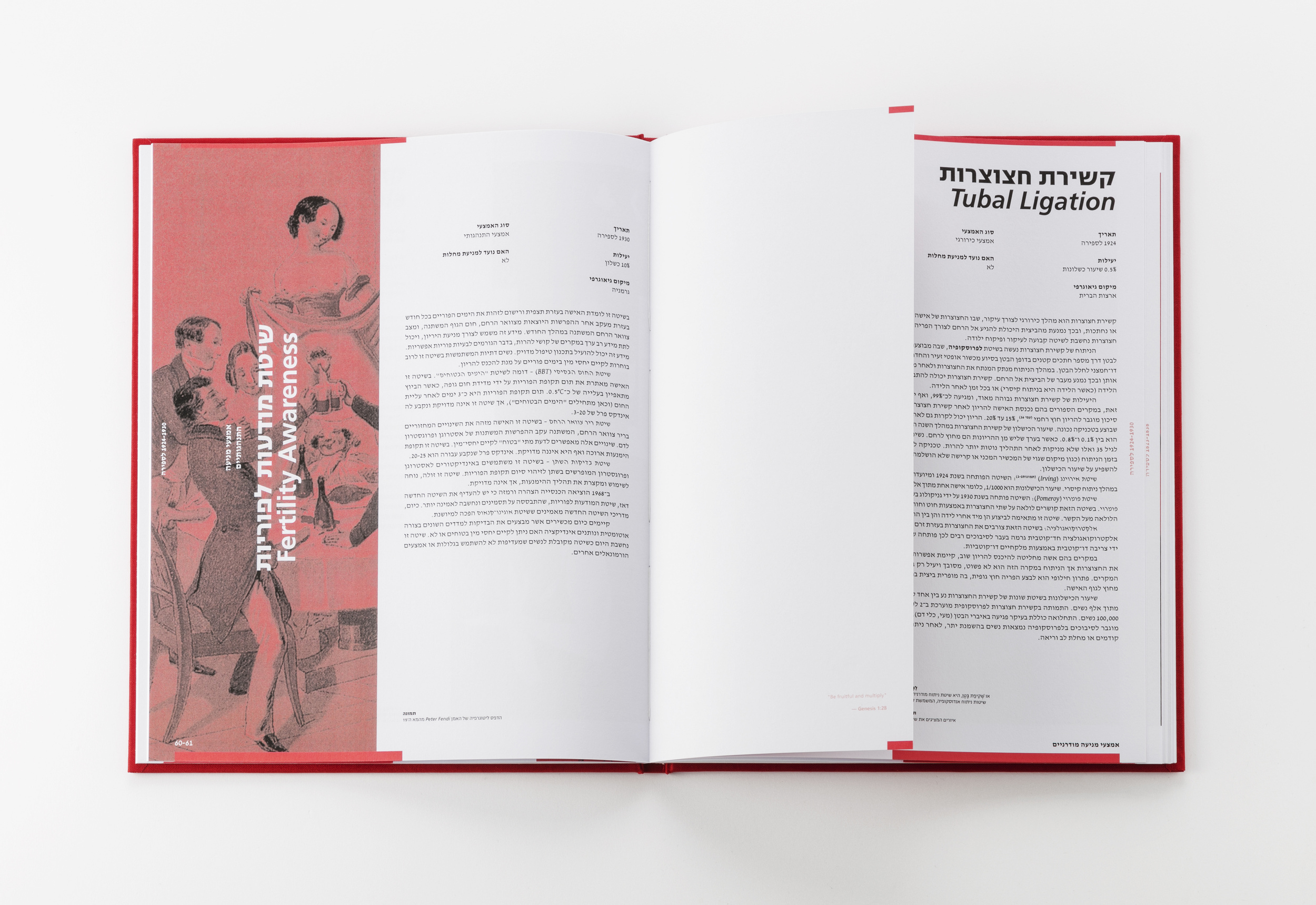
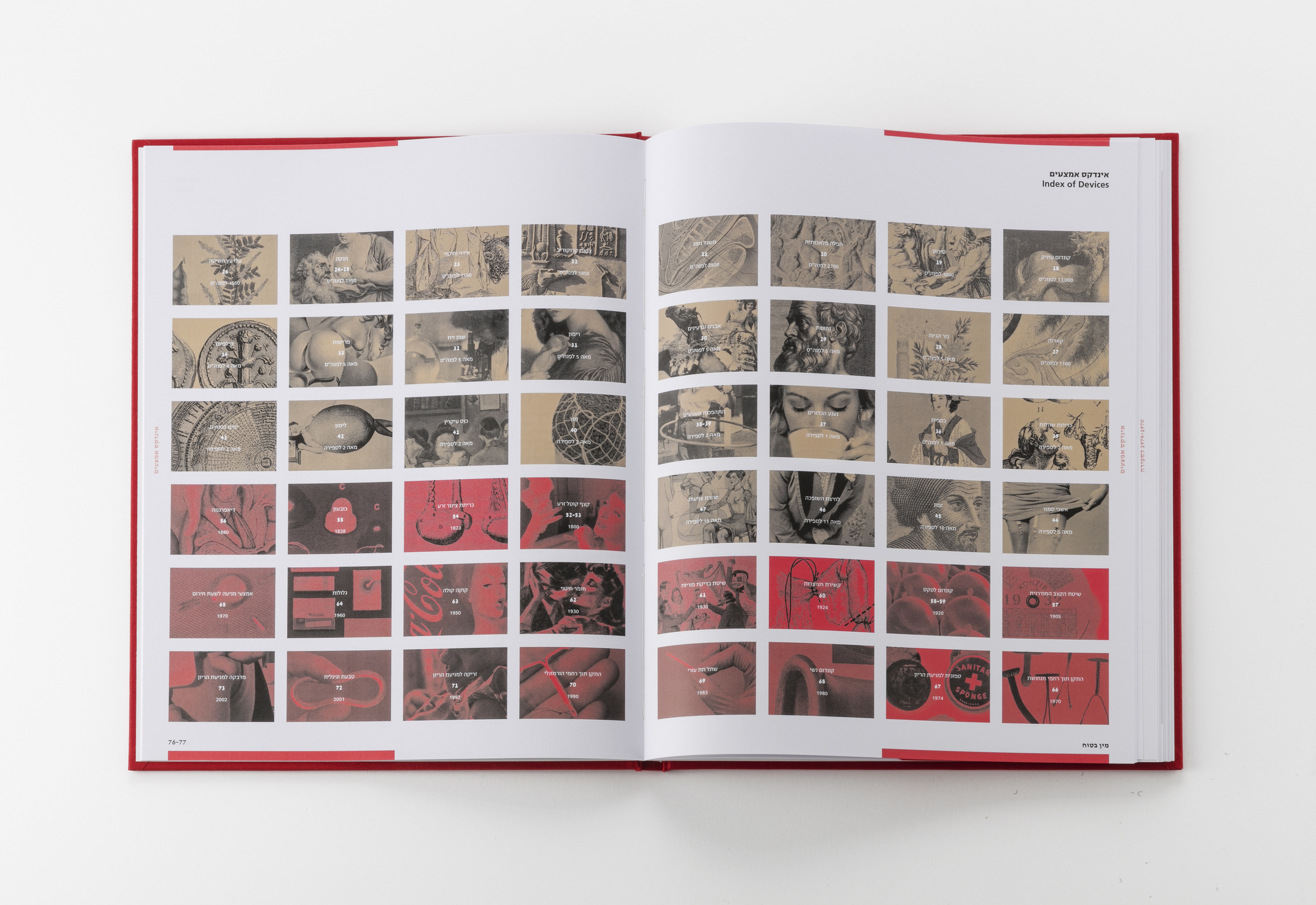
SAFE SEX
This book focuses on the history of contraception and contains 48 different methods used throughout human history. The book is divided into two chapters, one covering modern methods and the other ancient techniques. The methods are organized chronologically, with some of the most well-known contraceptives such as condoms, IUDs, and pills, as well as more obscure ones like crocodile dung, lemon halves, pennyroyal tea, and even Coca-Cola.
The design of the book is intended to resemble a design of a museum exhibit on the history of human behavior and sexuality, with a formal font and layout reminiscent of an encyclopedia or history book. Despite the classic design, I incorporated contemporary elements into the overall design system.
Featured on ExperimentaTypography Course, Shenkar, 2017 | Guidance: Michal Pauzner







THE ALPHABETICAL ROOM
The project “The Alphabetical Room” is a systematic exploration into the boundaries and limits of writing within a strictly calculated mathematical three dimensional grid within the flat digital space. Treating the three dimensional grid in the second dimensional digital space was always an intriguing matter for graphic designers, programmers, creative coders and visual artists.
Starting from Josef-Müller Brockmann’s grid proposal for the design of interior spaces in 1961, the perspective of the viewer changes throughout the pages of the leaflet as does the resolution of the three dimensional grids in which the hypothetical letterforms are displayed. In addition I wrote a short introductory essay on the historical and on-going fascination of graphic designers, programmers, creative coders and visual artists on that topic.
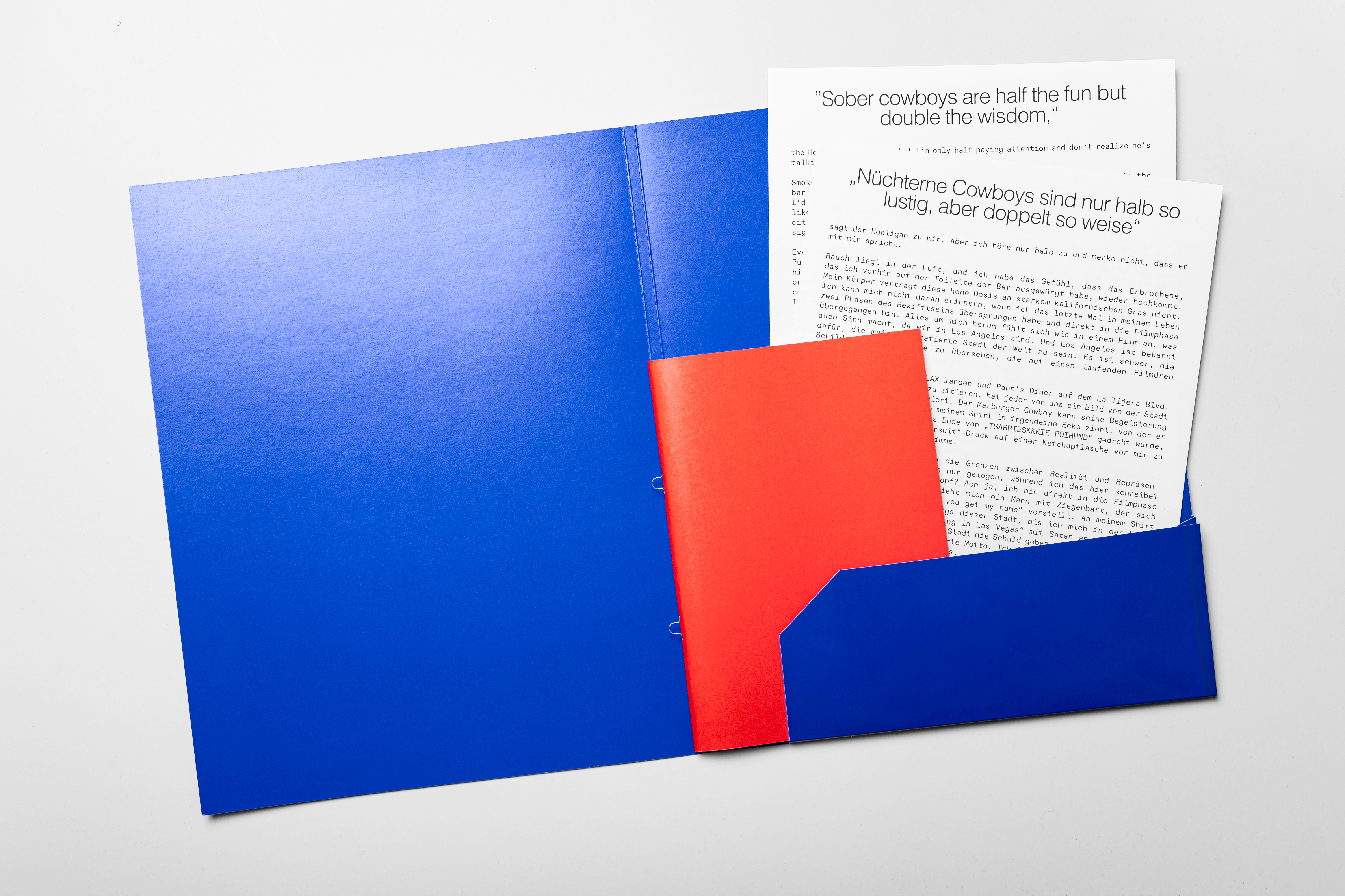
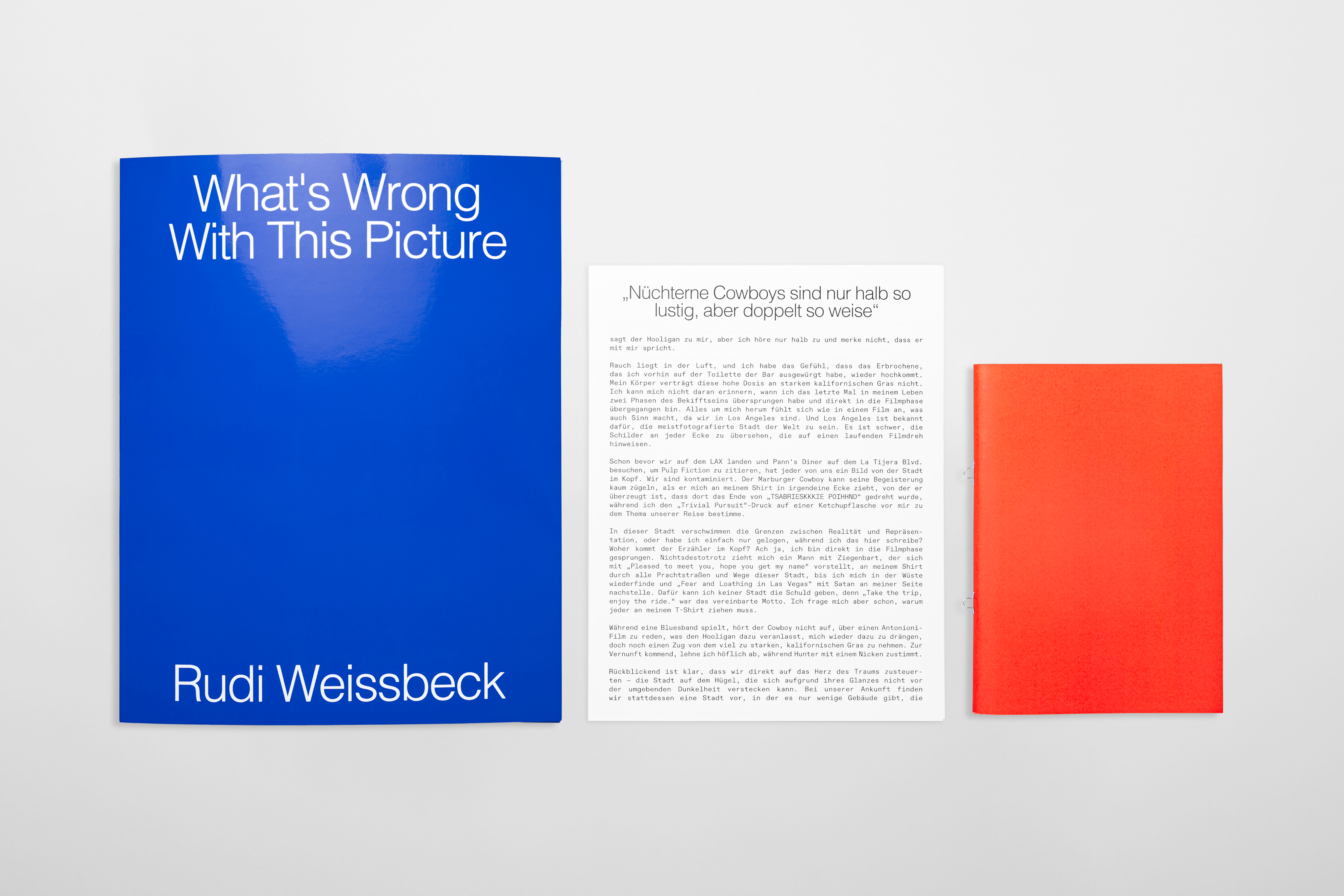

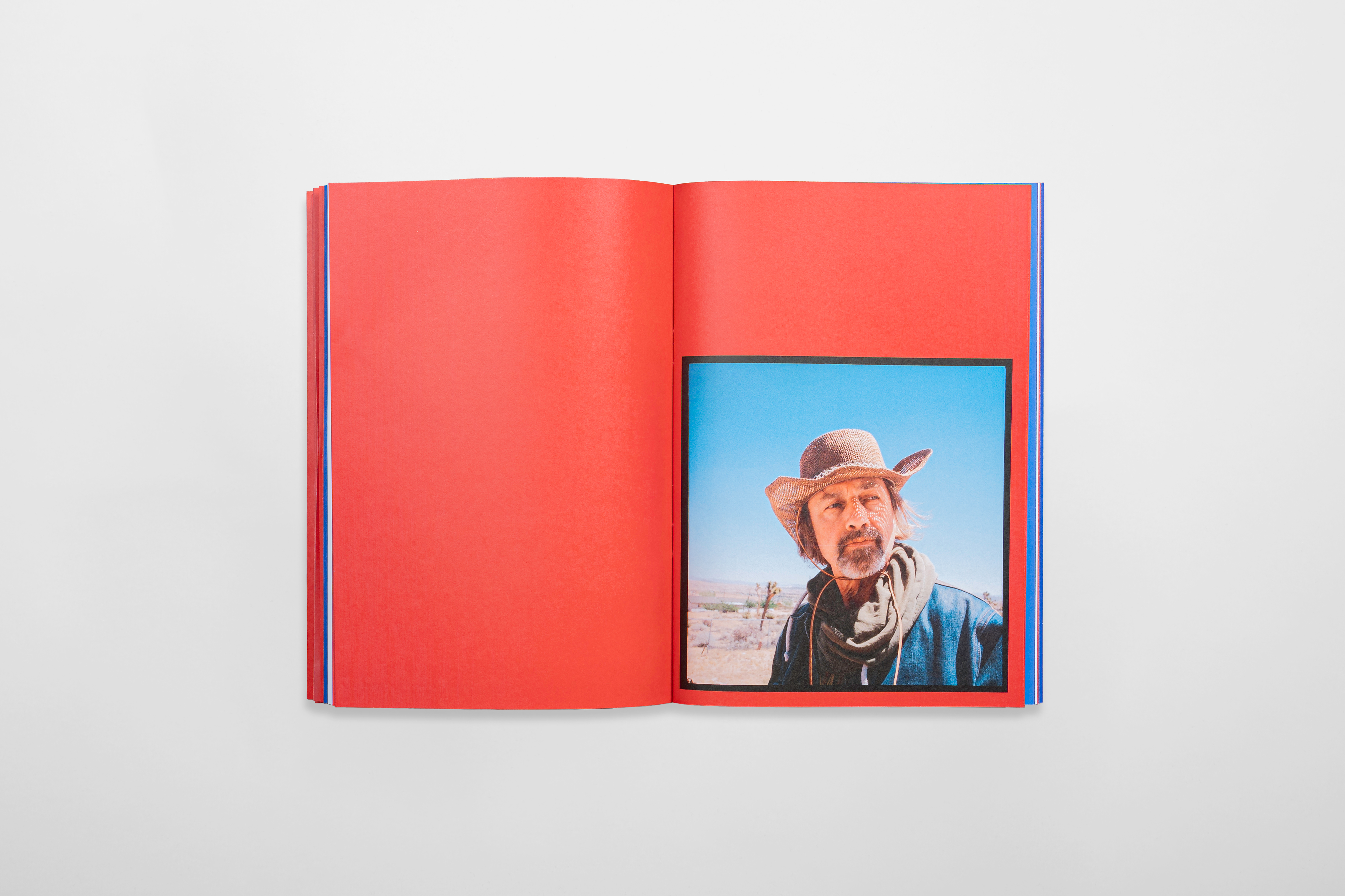

WHAT’S WRONG WITH THIS PICTURE?
Photobook design for the artist Rudi Weissbeck, featuring a travel journal and a short story, the book questions the essence of a classic road movie, while also embracing it. It is inspired by a journey along the American West Coast in 2015.Self-publishing, edition of 50 copiesDigiGold icewhite
Digital printing on HP Indigo 10000 Digital Press
Commissioned Project, 2023
Image Credits: Store Closing Everything Must Go, Safe-Sex, Austerity Baking Brand, Kleen (P. 1, 2) and Typography in Circular Motion (P. 1, 9) were shot by Keith Glassman. The Alphabetical Room was shot by Michael Kohls. Fahrenheit 451 was shot by Revital Topiol. The Road Begins in Capernaum shot by robstolk®. Unverzollt Catalog was shot by Thomas Schmidt.